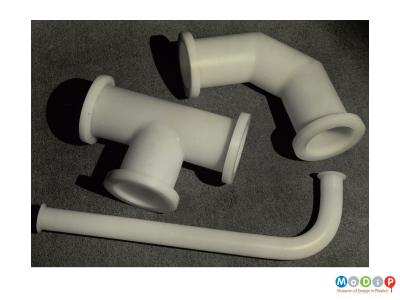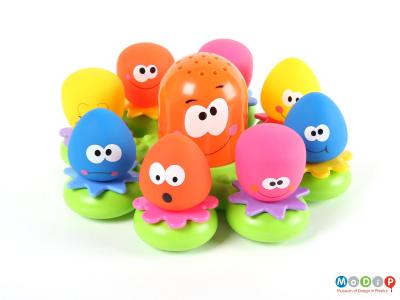Student creative
Adrian Finn was one of three Student Creatives in the academic year 2016 / 2017. The aim of the initiative was to offer all students at the AUB an opportunity to create work inspired by the MoDiP collection. This could be in any discipline with any creative outcome from physical art work to film or acting production. The MoDiP collection and / or the museum's practices had to be at the heart of the project and the work needed to be displayed either physically or digitally after a period of 20 weeks. A small bursary was provided to assist with material costs during the project and the remainder was paid on completion.
The resident was expected to keep the MoDiP team updated with progress reports on a regular basis either through email or face-to-face. They were also expected to write three blog posts during the process which follow below. The project not only helped MoDiP work closely with an AUB student, it gave the student a live brief and an opportunity to demonstrate their professional practice beyond their academic requirements.
Adrian's first blog post
I am a third year Architecture student at AUB, and have been given the opportunity to promote the Museum of Design in Plastics. My project with MoDiP seeks to explore and revive the connection between plastic products and their source - the fossil.
As a student of Architecture I like to produce work that is more conceptual - something that gives the viewer a narrative or idea, and hopefully evokes emotion or thought. I also enjoy capturing these ideas through the aesthetics of my work - this varies from model-making, architectural plans, and photography. Below are examples of my previous works:
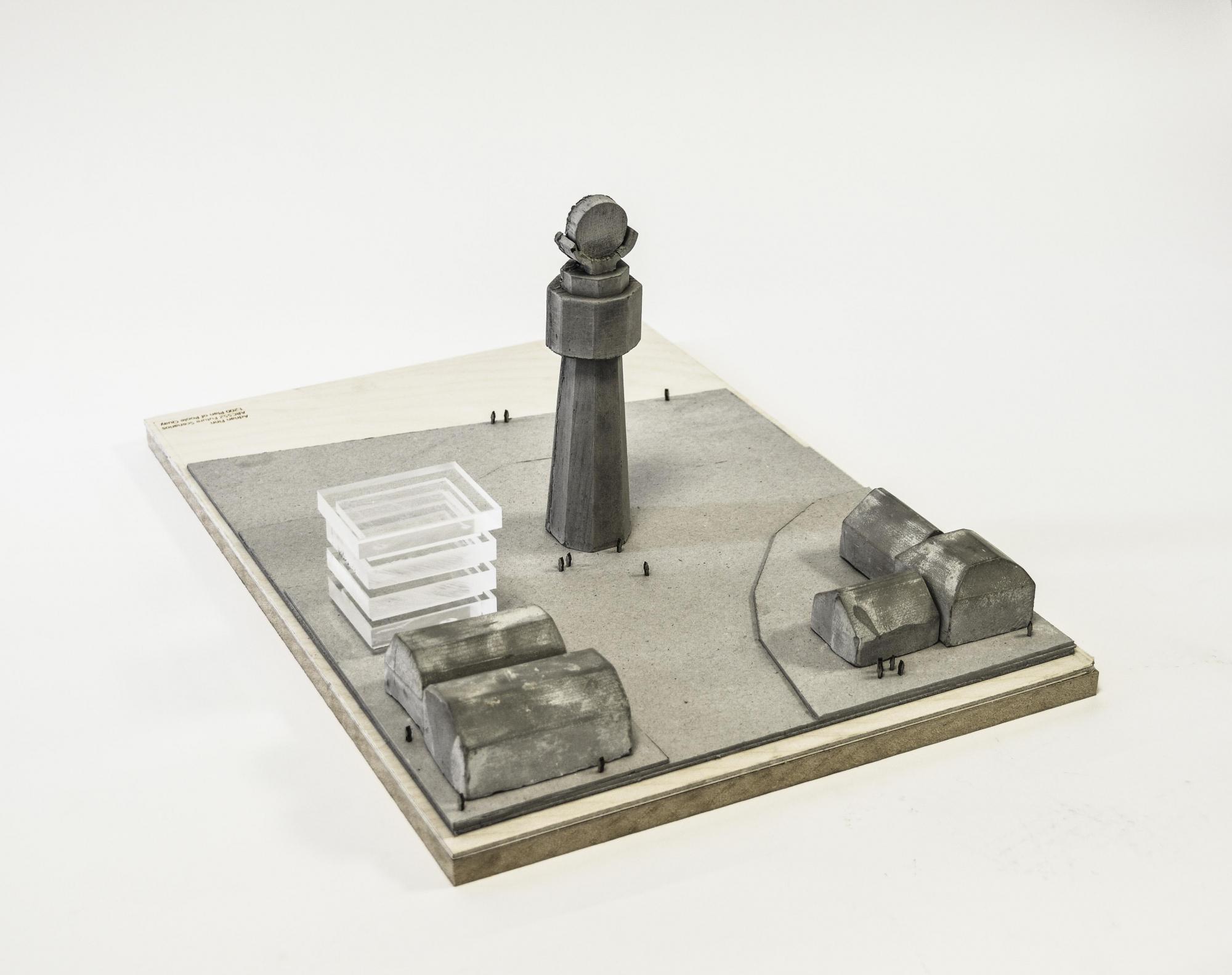
Scale Model of an Orwellian Future for Poole (Future Scenarios project)
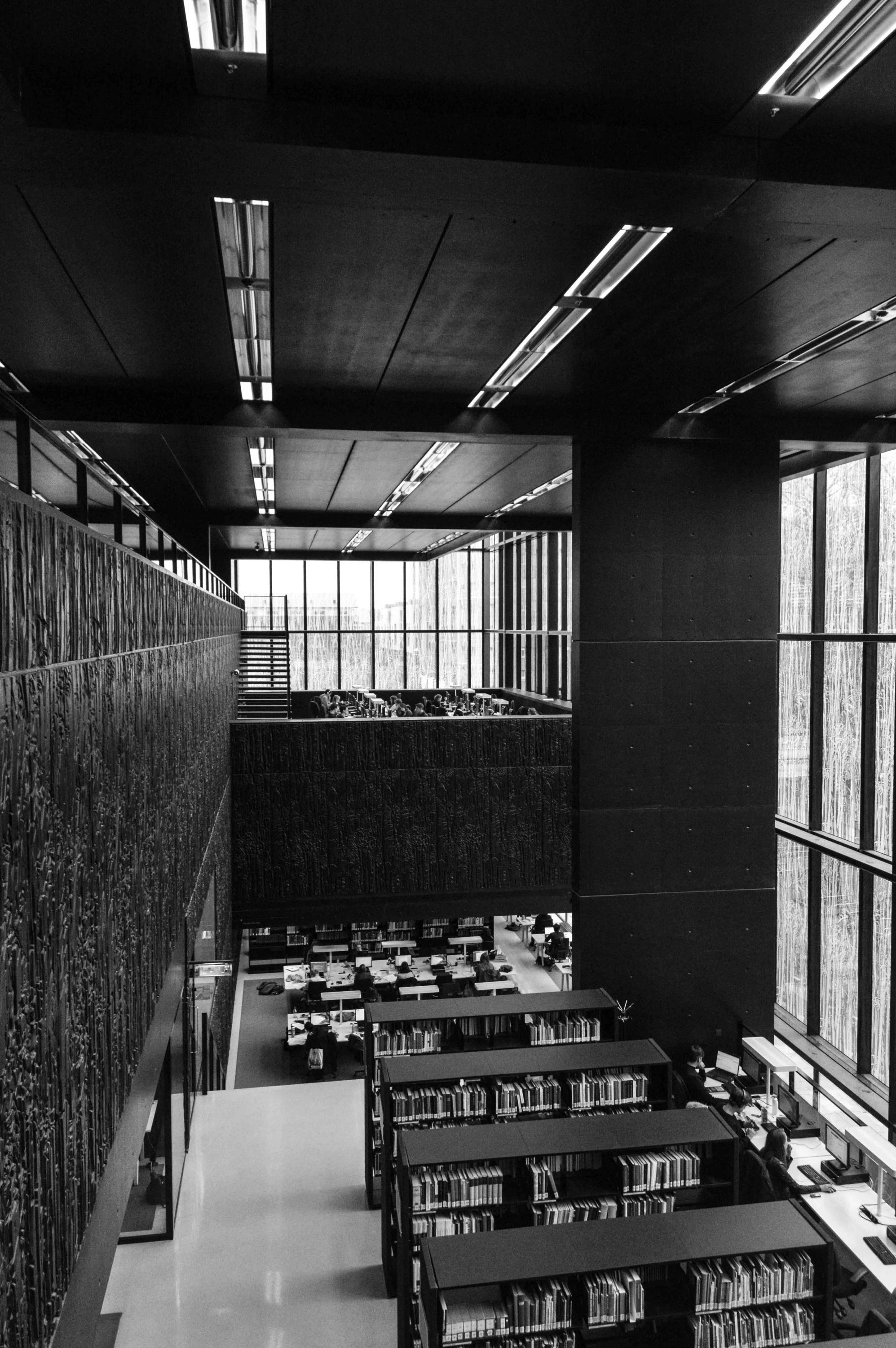
Utrecht University Library, interior
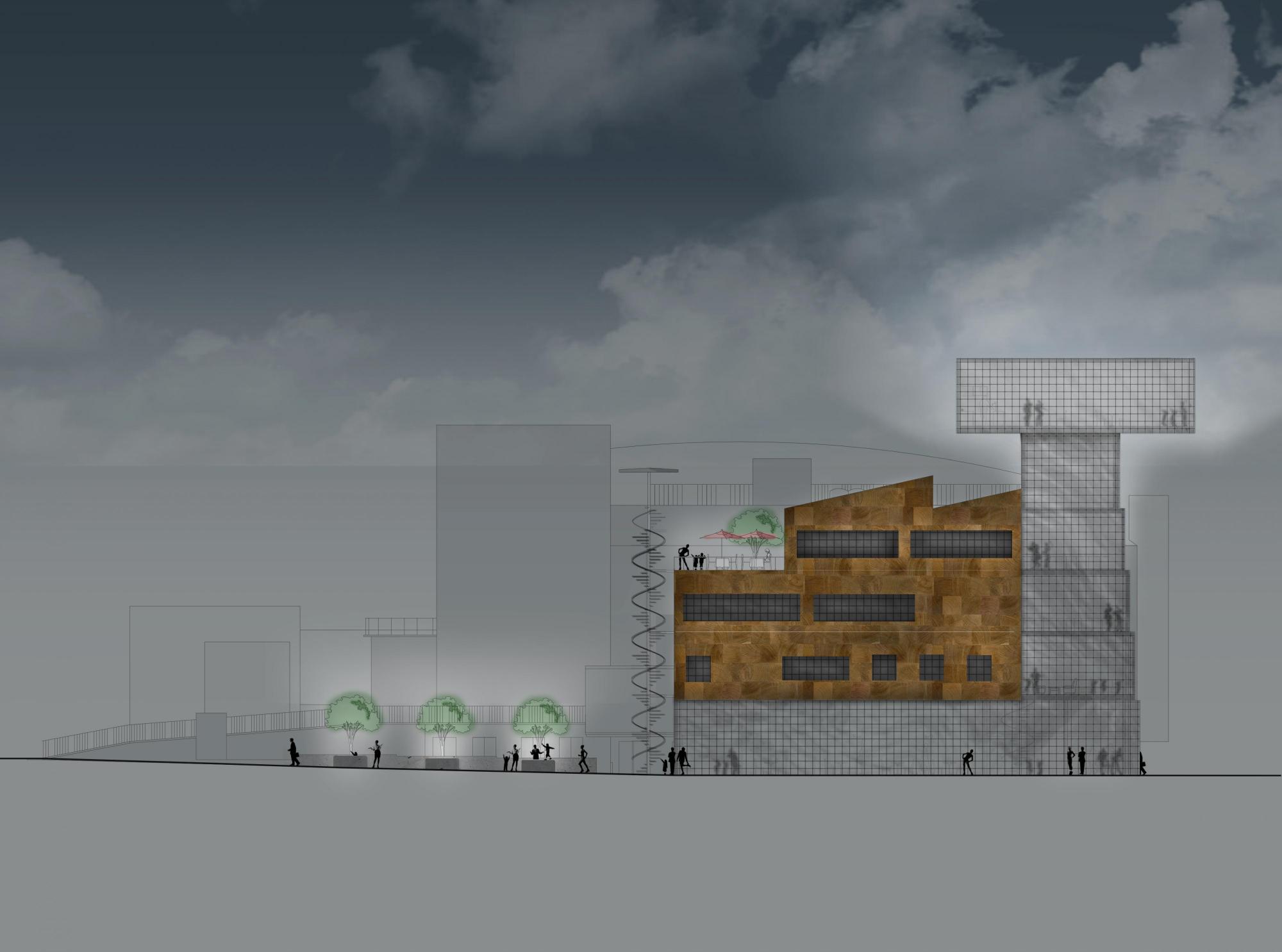
Side Elevation of a proposal for a music school extension to Poole Lighthouse
As I have already worked in a conceptual way within the subject of Architecture, I would like to explore a different subject - plastics, and how we think of them.
For myself, after initially visiting MoDiP, the sheer diversity in what we define as plastic products is astonishing - be it drain pipes and gutters, snooker balls, baby toys, and so on. The difference between the snooker ball and the squeezable toy is amazing!
When one looks at masonry stone used to build, the original stone found in the quarry, and the final heavy block, is fairly similar in appearance. When one looks at the timber structure of a building, the timber used originally may be defined in a number of ways - be it colour, weight, growth rings, and so on. Try this logic with the nearest plastic object to you - how do you imagine the plastic being sourced? Does the material give any clues? The colour? The texture?

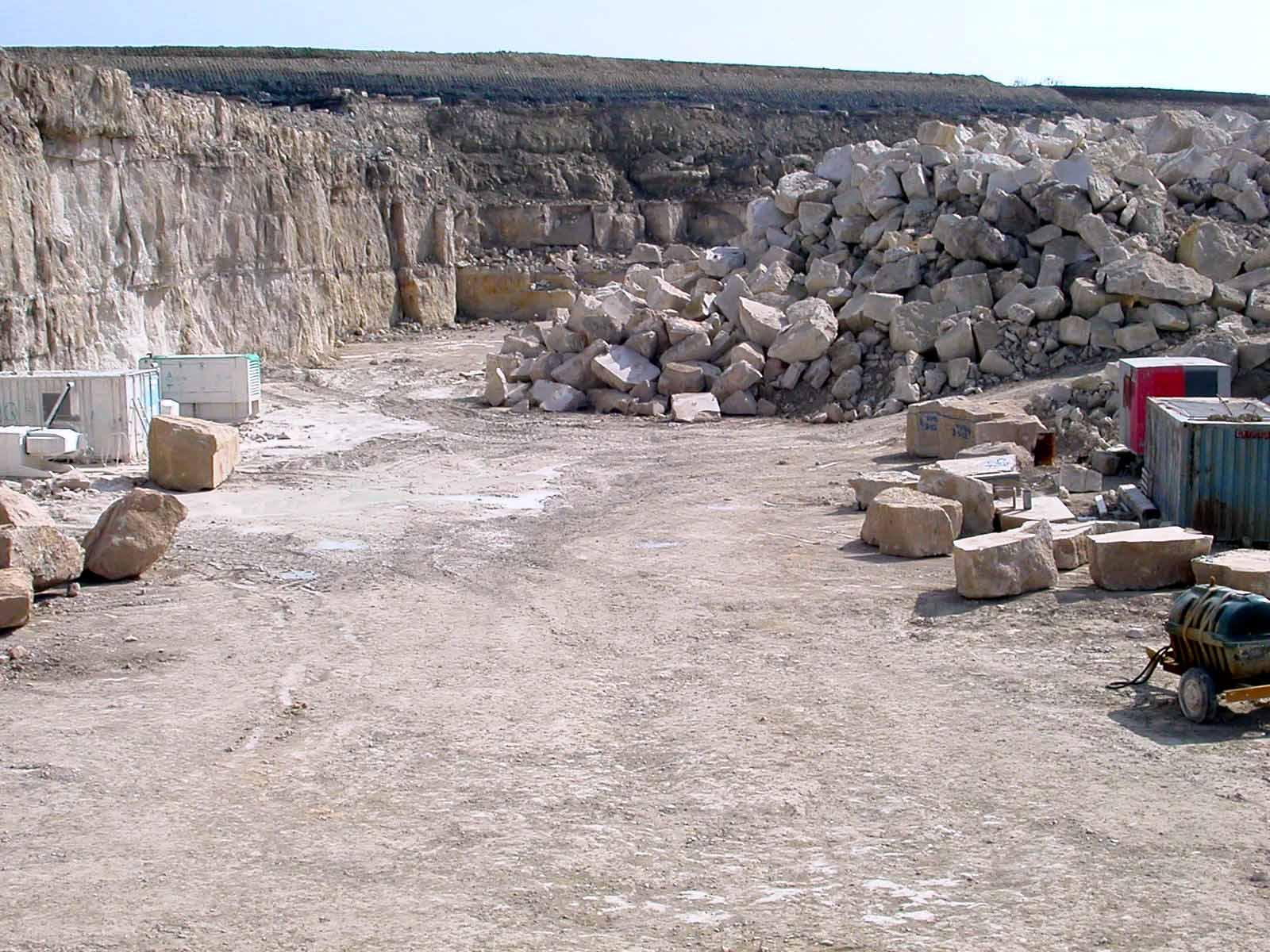
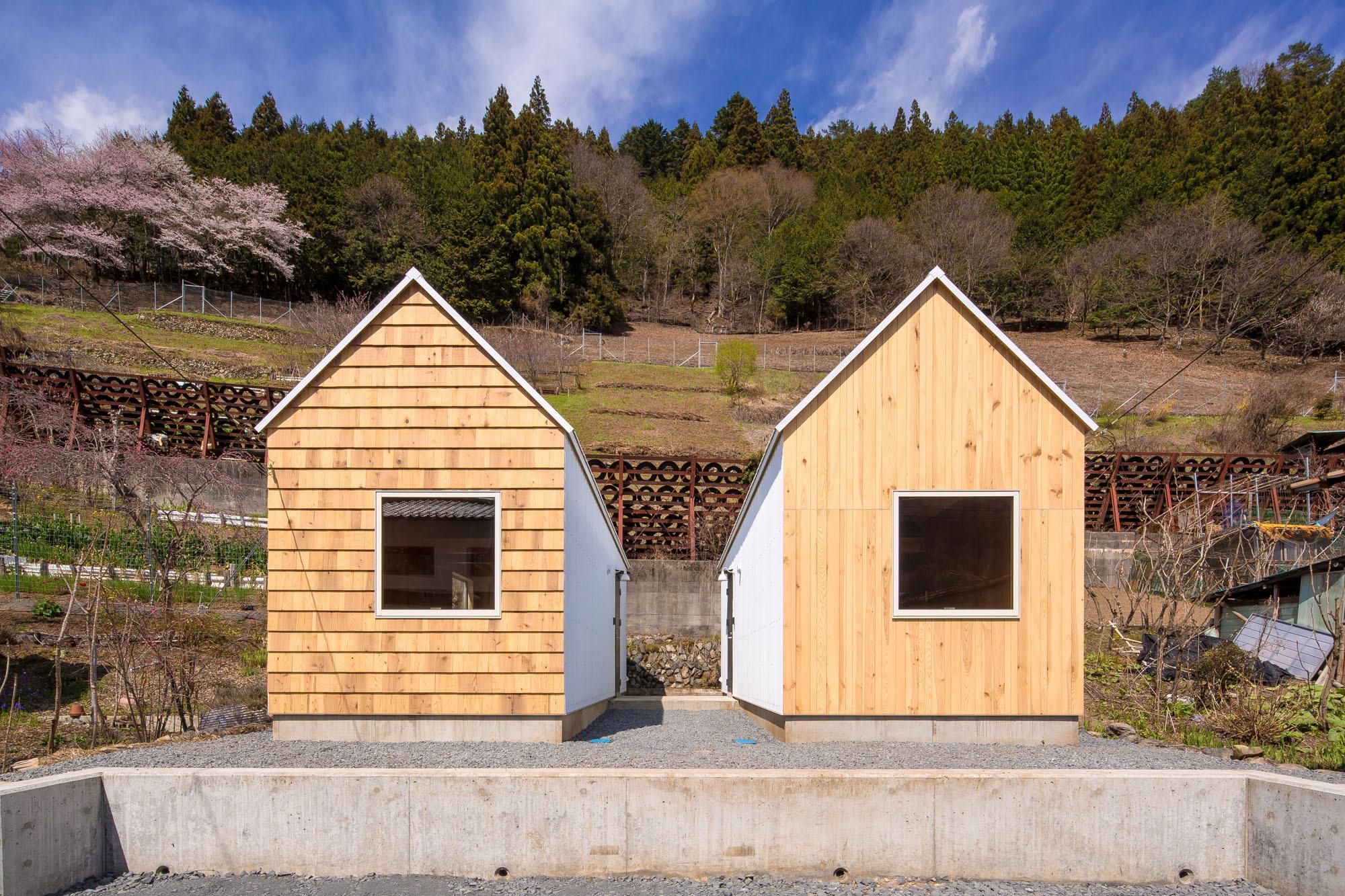
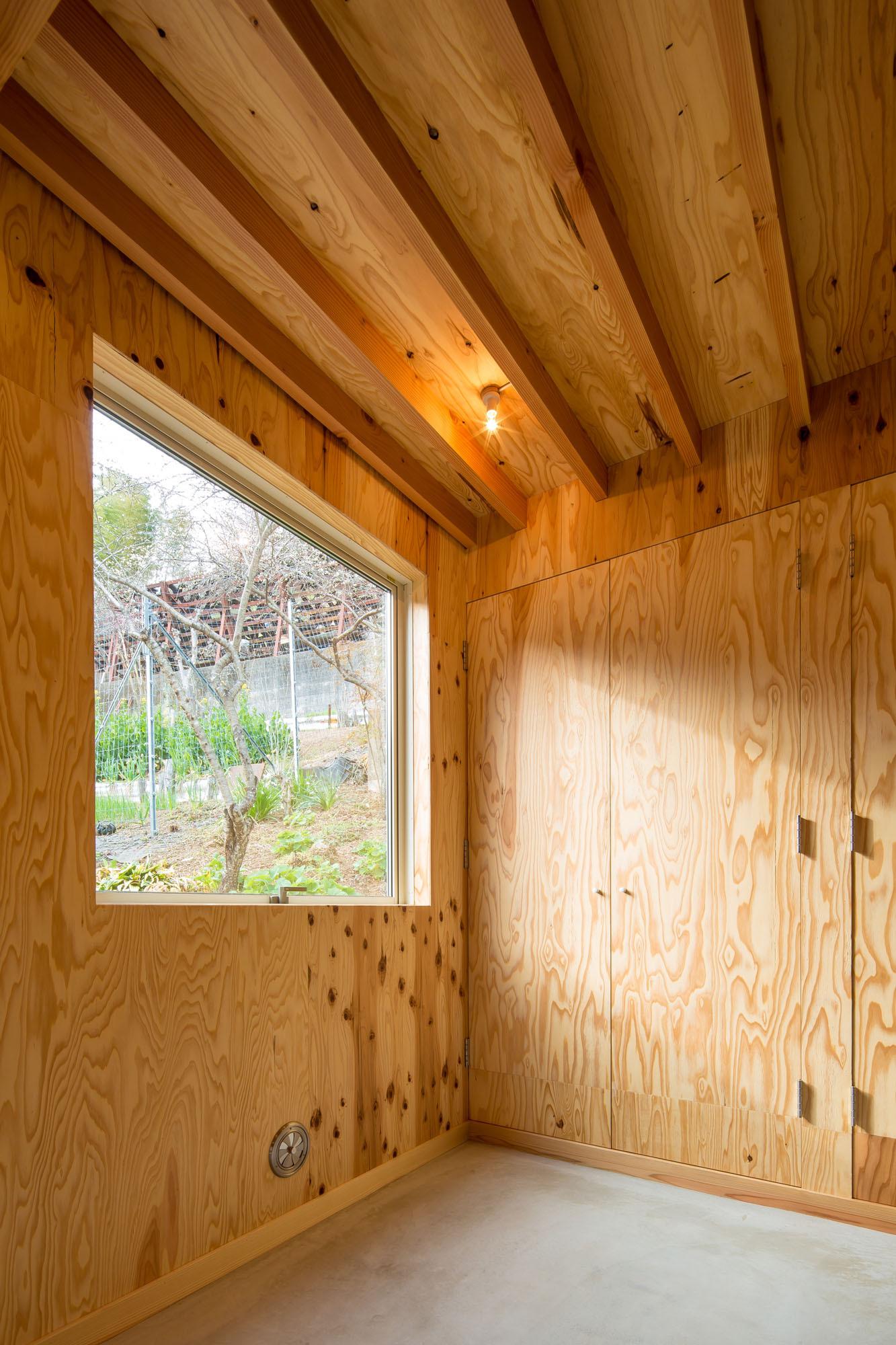
http://images.adsttc.com/media/images/5716/b2c5/e58e/ce07/4f00/00f7/lar…
Plastics can be manipulated to change their form, materiality, texture, and properties in many ways. Unlike timber and stone, plastics can be separated from their source material almost entirely. Considering the stereotypical bright and clean colours that we associate with plastics and plastic products, they can seem so 'synthetic', or 'unnatural', when this simply isn't true!
Plastic is formed from crude oil, a fossil fuel. Crude oil is formed over millions of years. It starts when plankton in the sea dies, falls to the bottom of the sea bed, and becomes crushed by sediment falling on top of it. Over millions of years the remains of the plankton changes into crude oil, which through fractional distillation can be separated into all kinds of oils - including the oil used to make plastic products.
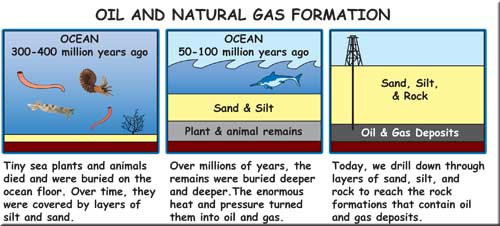
http://s18.postimg.org/x9e9fytnt/oildrill.png
The fact that plastics start their life within fossilised remains is something that I feel is lost today. We are constantly reminded to reuse and recycle our plastics - but without an understanding of the original source of the material, is it harder for the public to be compassionate about recycling? Is there an alternative to the 'guilt trip' method of raising awareness for recycling (think of footage of massive mounds of dumped plastic with floods of seagulls harassing a dumpster truck)?
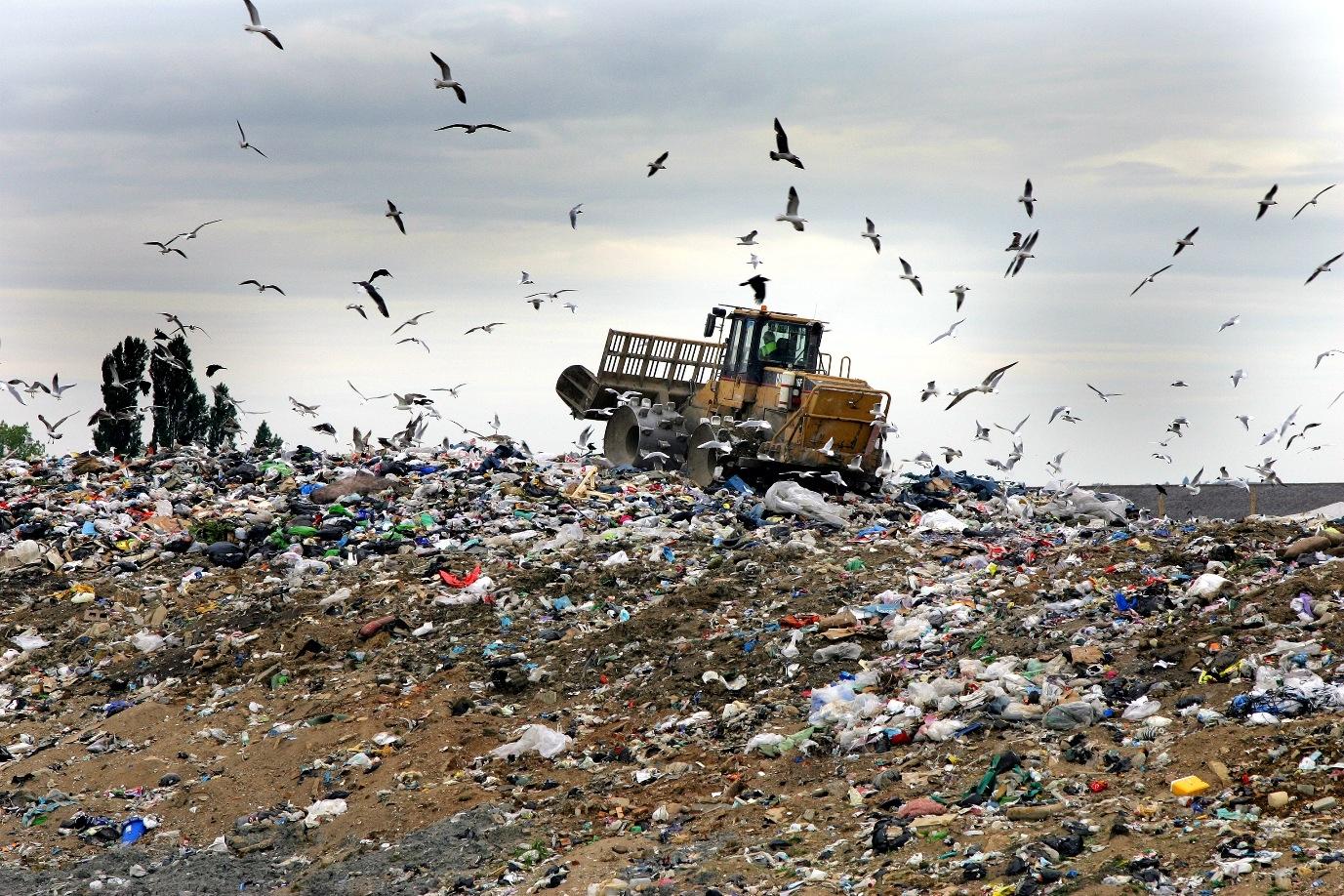
https://thesmallaxe.files.wordpress.com/2007/12/waste-1-epr1-landfill.j…
My project with MoDiP seeks to explore and revive the connection between plastic products and their source - the fossil. I would like to produce a piece of work that juxtaposes the 'synthetic' portrayal of plastics today against the aesthetics and properties of fossils. This should spark an idea of how we view plastics - giving them more context in our existence on Earth, and how we harness them to create our world.
Adrian's second blog post - Progress
As a student of Architecture, I like to produce work that is more conceptual - something that gives the viewer a narrative or idea, and hopefully evokes emotion or thought. I want to juxtapose the 'synthetic' portrayal of plastics today against the aesthetics and properties of fossils.
My initial thought was to produce something quite straightforward that aggressively combines fossils and plastics - by making a fossil appear like a contemporary plastic object. After all, we are used to seeing fossils in their rock form, but less commonly do we see (for example) the ammonite that once inhabited the fossilised shell:
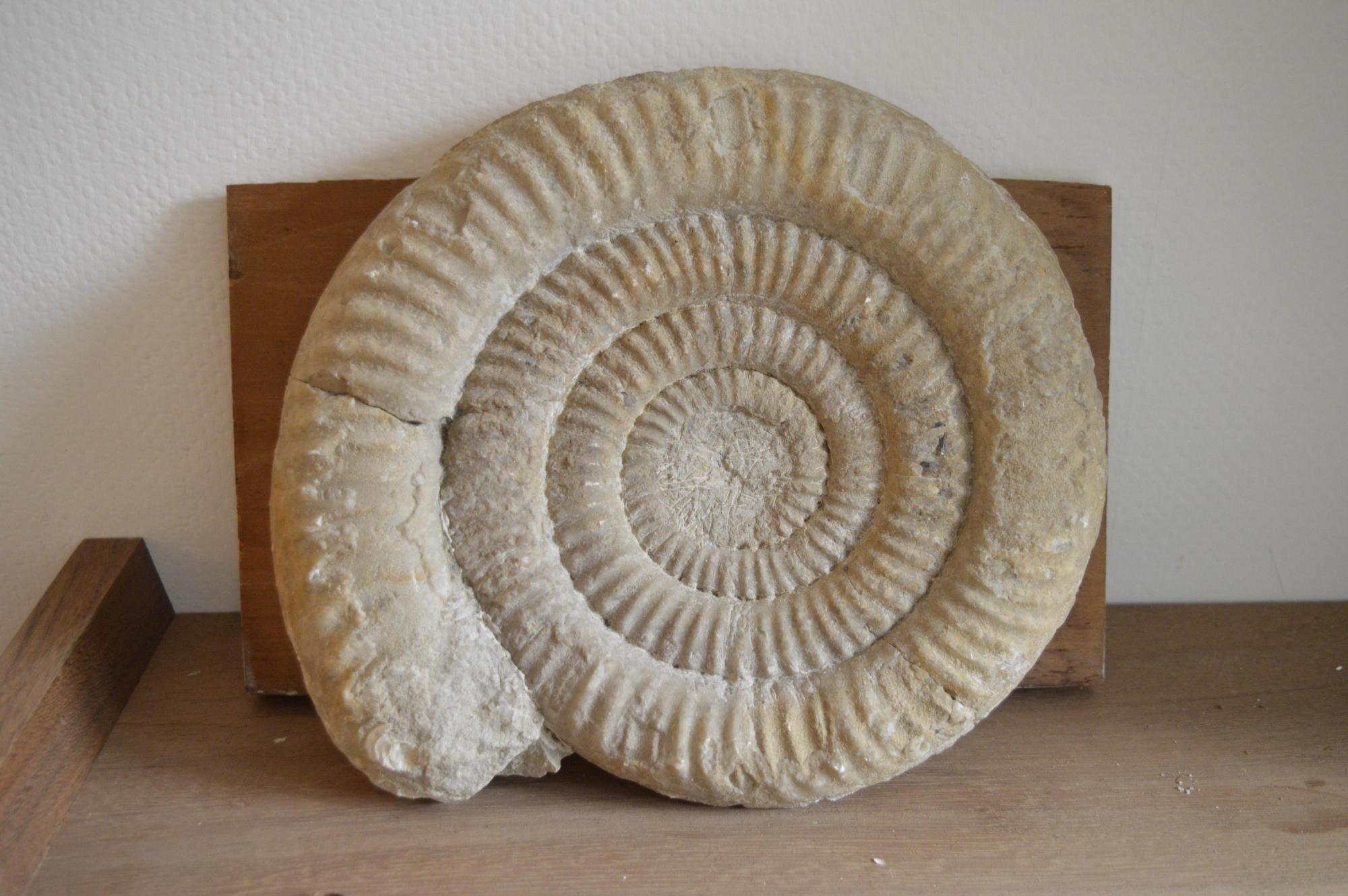
Large Ammonite Fossil
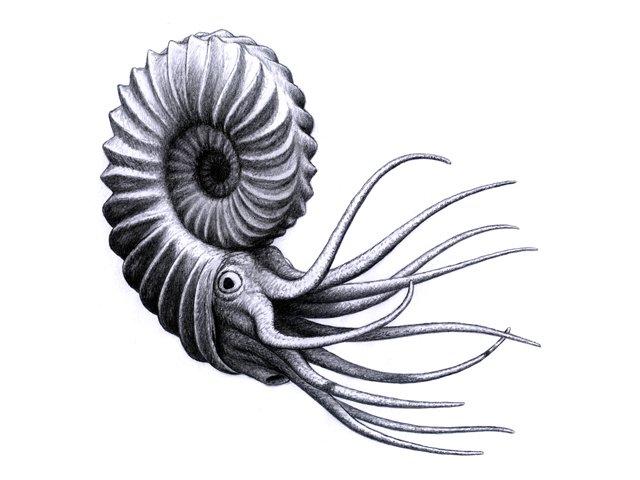
Artist's Impression of an Ammonite
To respond to this, I decided to use Photoshop to edit the artist's drawing to give it the character of a generic plastic product, by smoothing out the lines and making it a bright pink. Without context or scenery however, the image is quite ineffective. This lead to working out how this plastic ammonite would actually exist as a product. Some of the ideas were:
- A standard plastic ornament/model of an ammonite
- An inflatable plastic product such as a balloon or a swimming pool toy
- A 3D printed plastic model
- A plastic squeezable plastic toy
- A small collectible, or pocket-sized model, similar to the old 'Crazybones' toys
One of these was rendered in Photoshop as a collage, producing a very… interesting image:
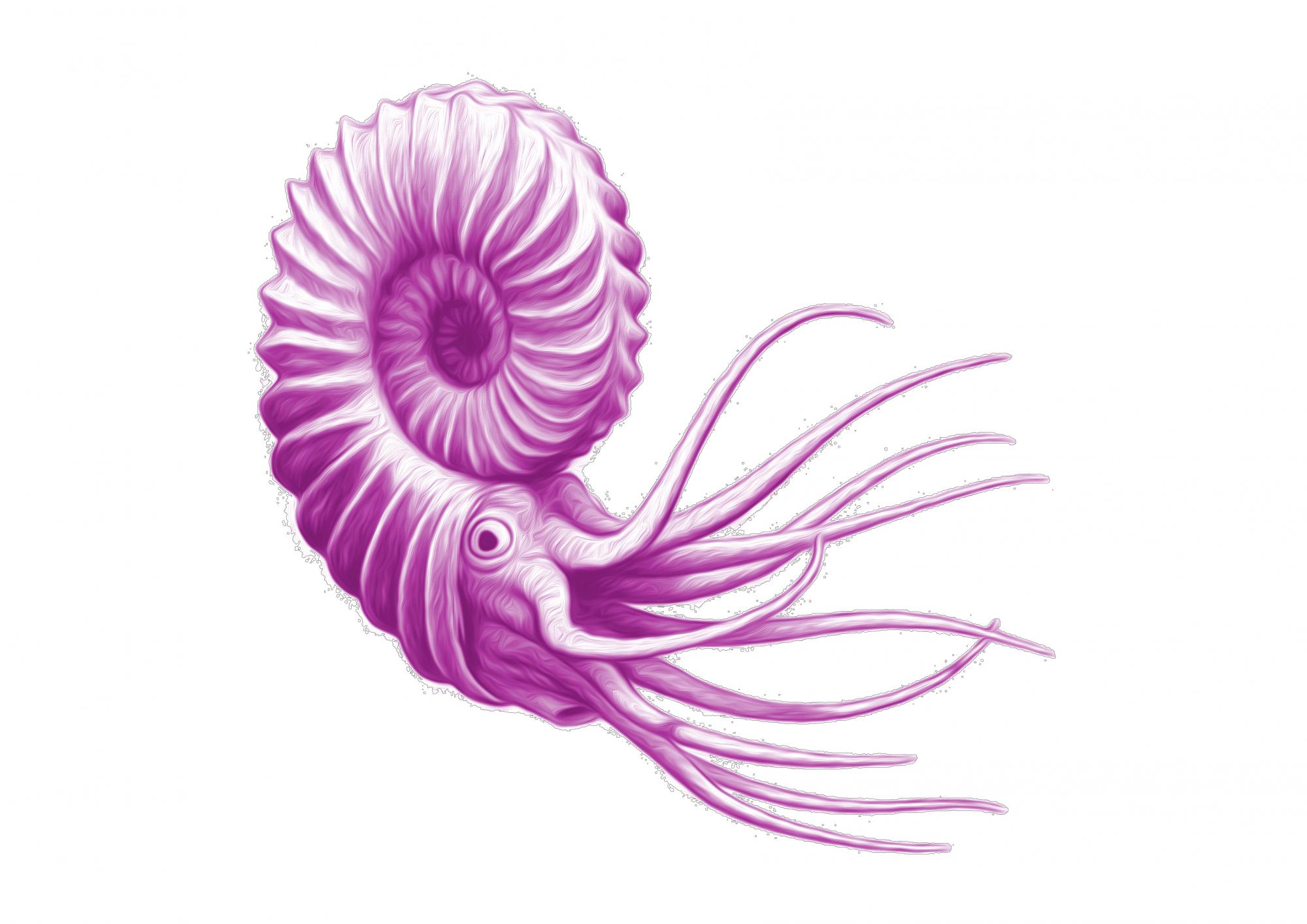
Pink Plastic Ammonite
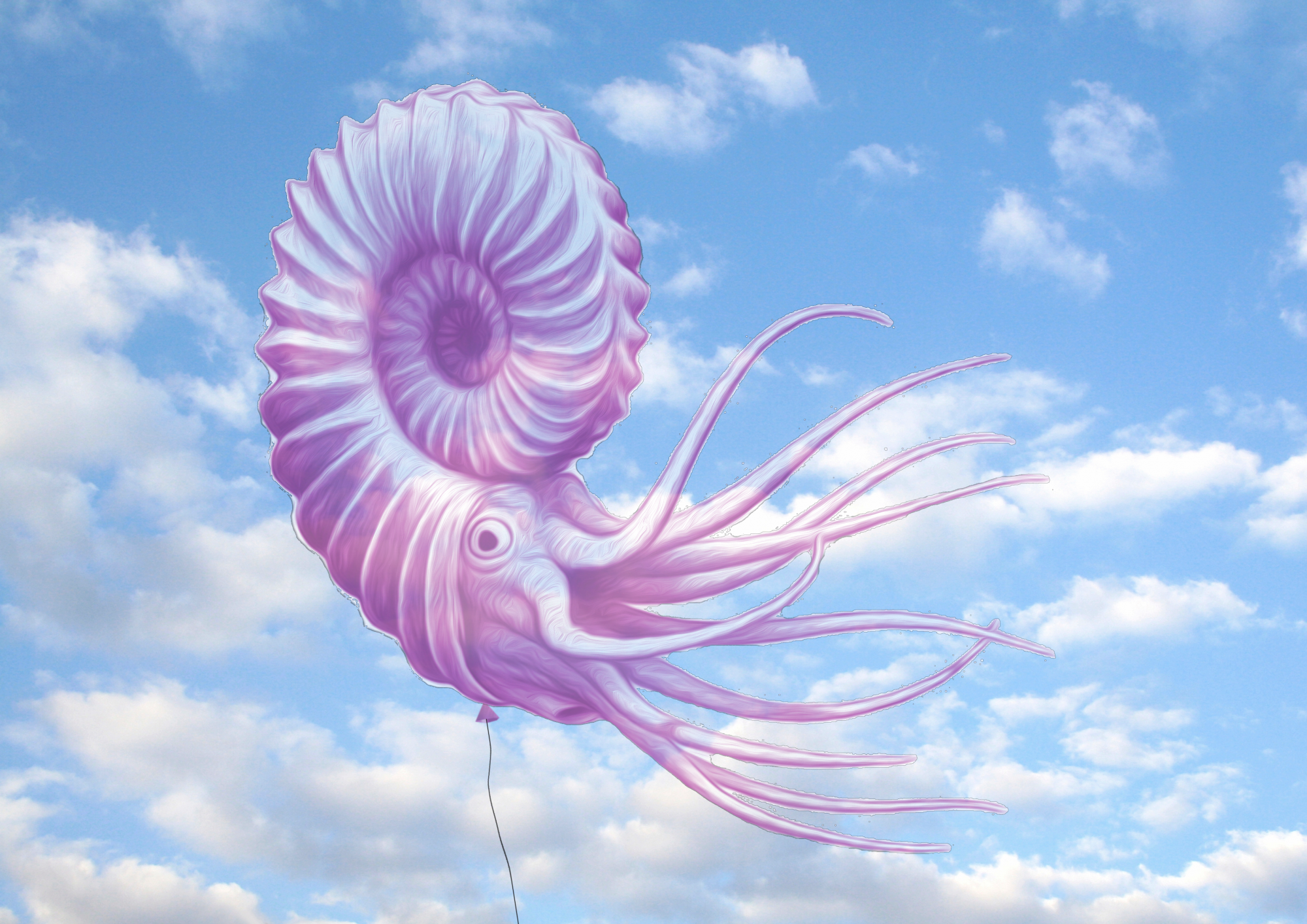
Pink Balloon Ammonite
I also tried simulating a reversed version of the original idea - a modern day plastic object with the appearance of a fossil. The initial idea is much more engaging in my opinion, but thinking about both ideas has been helpful:
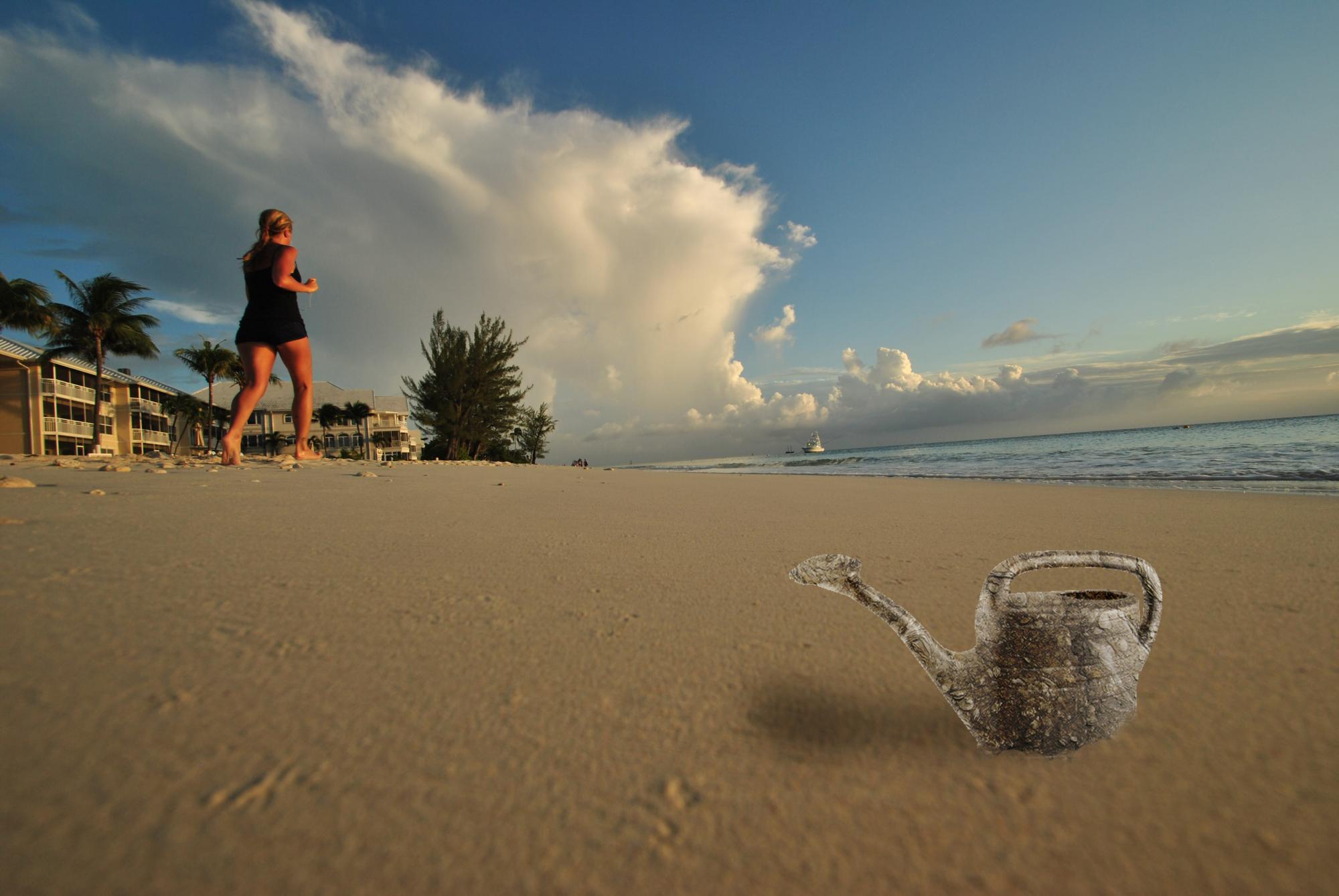
Watering can fossil on a beach
By complete chance, I discovered an exhibition by a local artist called Rachel Fooks, a ceramicist. Her work generally involves creating clay sculptures of invented fossil species that resemble real species. Her works are placed along the local coastline, giving them context and realism. I made a quick Photoshop experiment that played with the materiality of the sculpture, and through this considered a standalone sculptural plastic model for a final piece of the project.
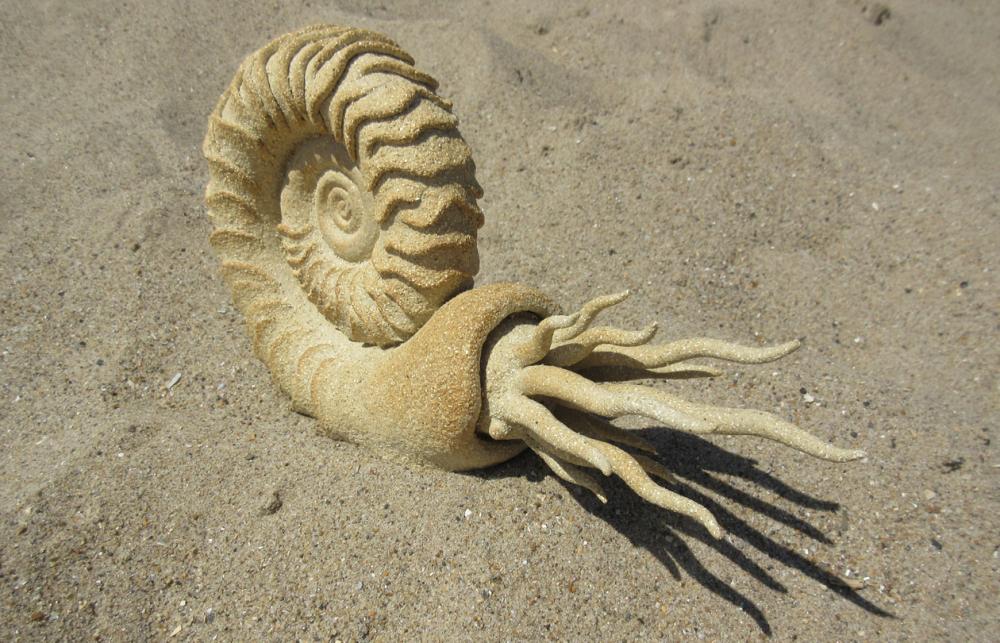
Ammonoidea Unda Rachel Fooks
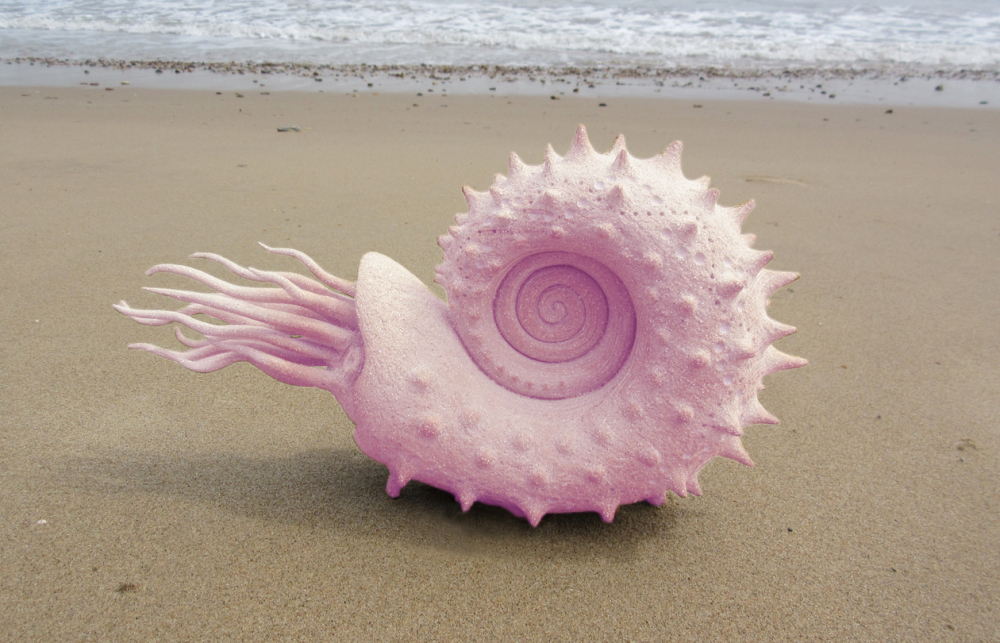
Ammonoidea Magnus Pink Plastic
Through this, I have decided to produce a 3D printed plastic model of an ammonite for the final piece of the project.
3D printed products are chiefly made of plastic today:
"There are many materials that are being explored for 3D Printing, however you will find that the two dominant plastics are ABS and PLA. Both ABS and PLA are known as thermoplastics; that is they become soft and moldable when heated and return to a solid when cooled." (ProtoParadigm)
I felt that a 3D print of an ammonite would juxtapose the fossil and plastics very well. 3D printing, being one of the most recent developments in plastic technology, would be representing an incredibly old creature.
Also, another piece will be planned to be painted in acrylic paint. Acrylic paint is an acrylic polymer emulsion - a synthetic paint. This choice of media will represent another interesting way in which plastic influences art, in a product we don't generally associate with plastic.
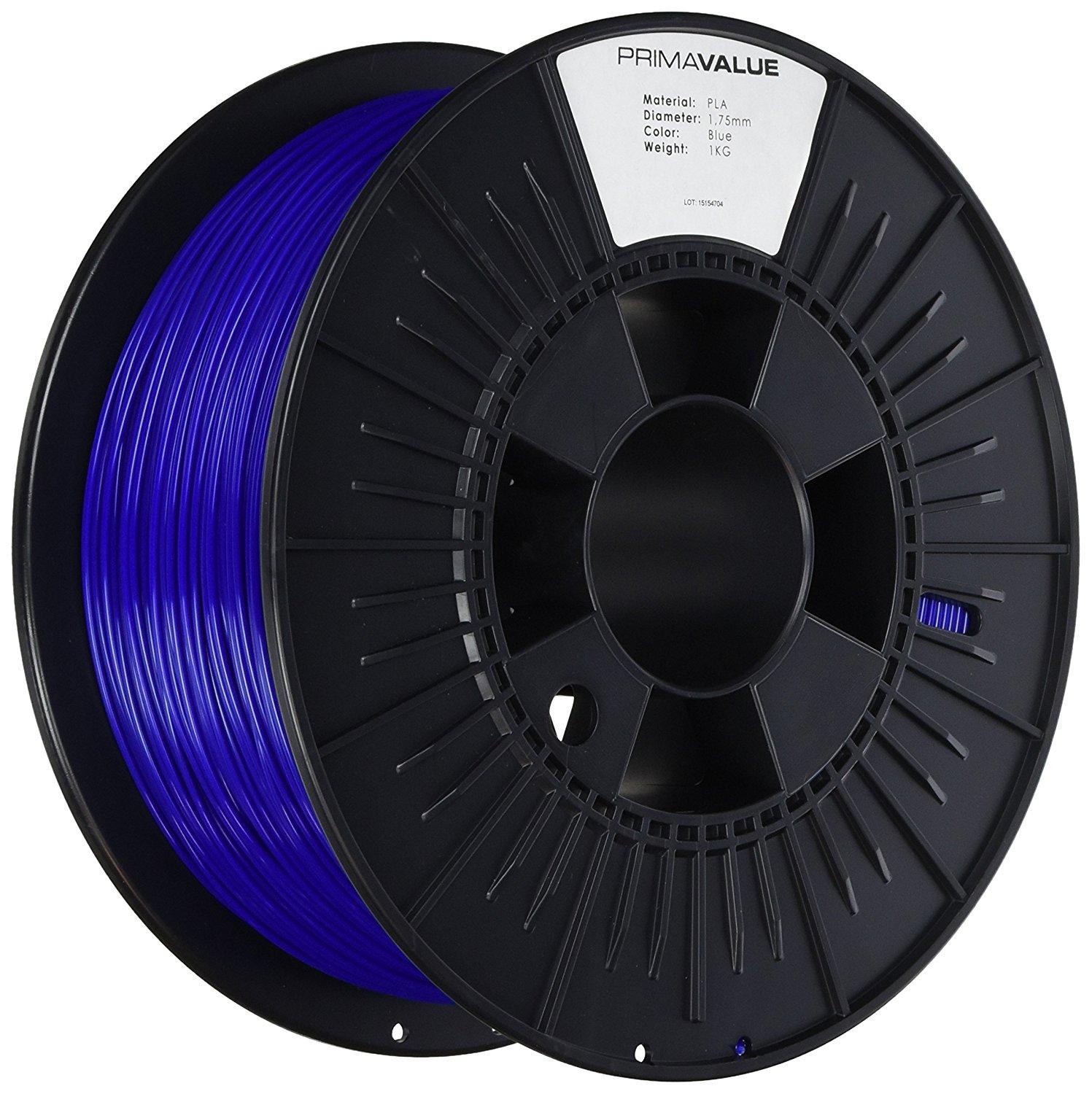
PrimaValue PLA Filament - 1.75mm - 1 kg
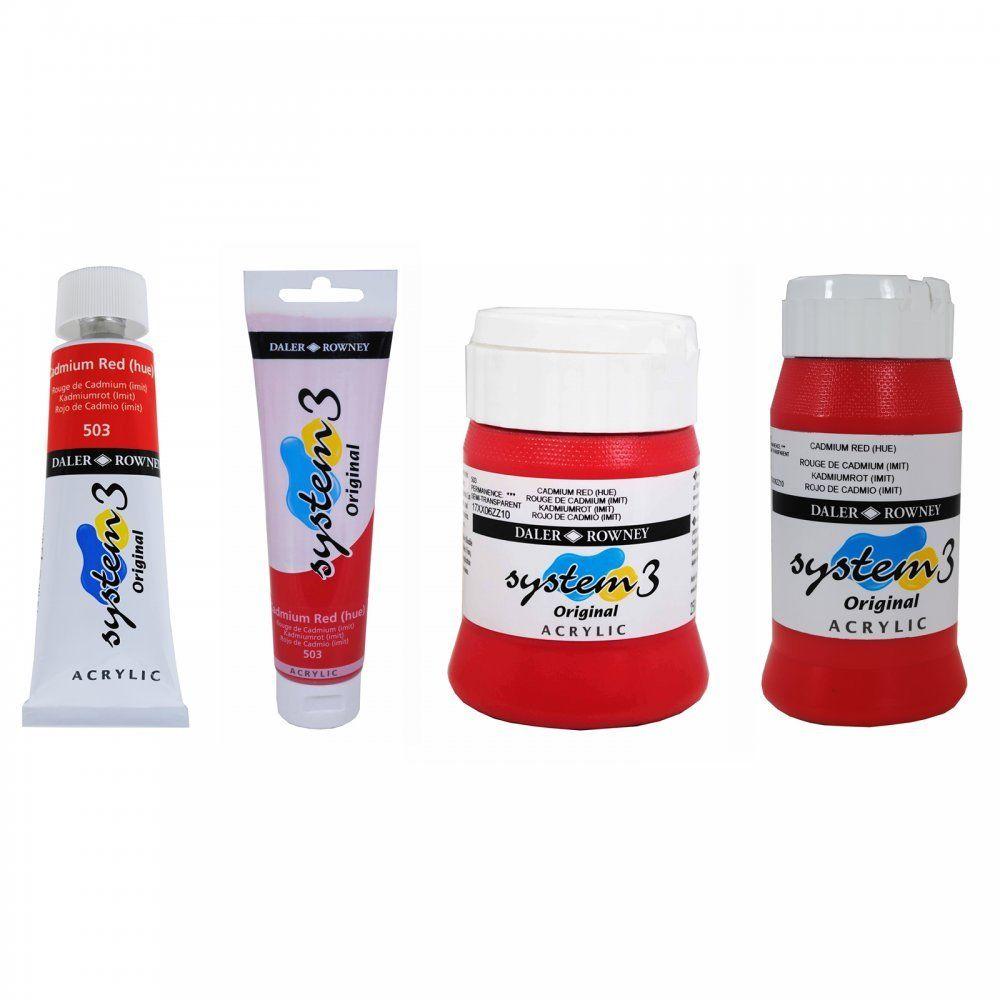
Daler Rowney Acrylic Paint Set
Though to produce the final piece, I will have to learn how to use 3D modelling programs, and how to 3D print!
Adrian's final blog post - Project overview
As a student of Architecture I like to produce work that is more conceptual - something that gives the viewer a narrative or idea, and hopefully evokes emotion or thought. I want to juxtapose the 'synthetic' portrayal of plastics today against the aesthetics and properties of fossils.
In the last blog post, I stated that I would have to learn a new 3D modelling program, and learn how to 3D print. The former was actually unnecessary - a program that I am already familiar with, SketchUp, can be used for 3D printing when various plug-ins are installed for it. Learning how to 3D print, however, has been a very interesting and informative journey. This blog post will be heavily condensed for your convenience - the journey towards the final piece has been very long and arduous!
To 3D print something, you must have your chosen object as a digital 3D object. I used SketchUp to make an ammonite from scratch. This way, I would be crafting an entirely original product, using my skills in digital modelling to make up for my inexperience in manual modelling.
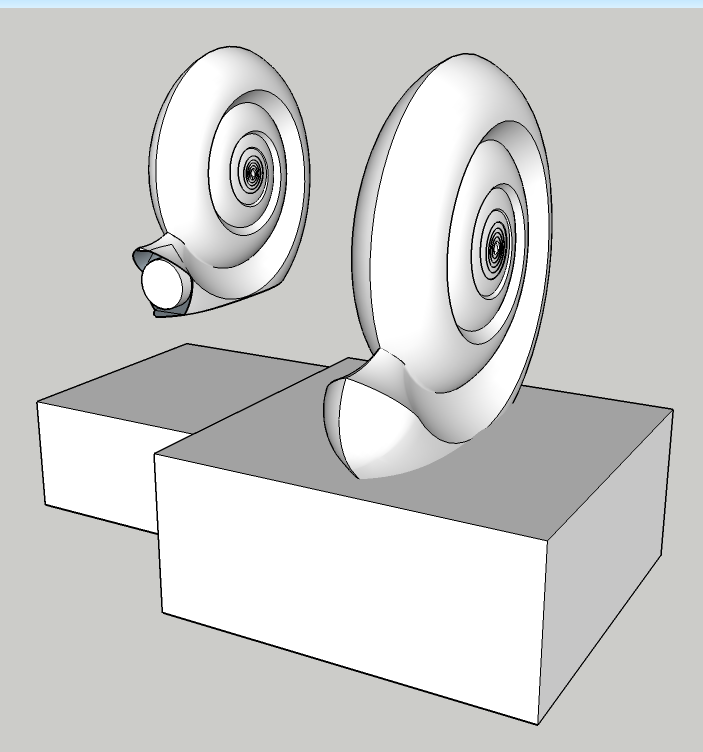
SketchUp modelling, Adrian Finn, 2017
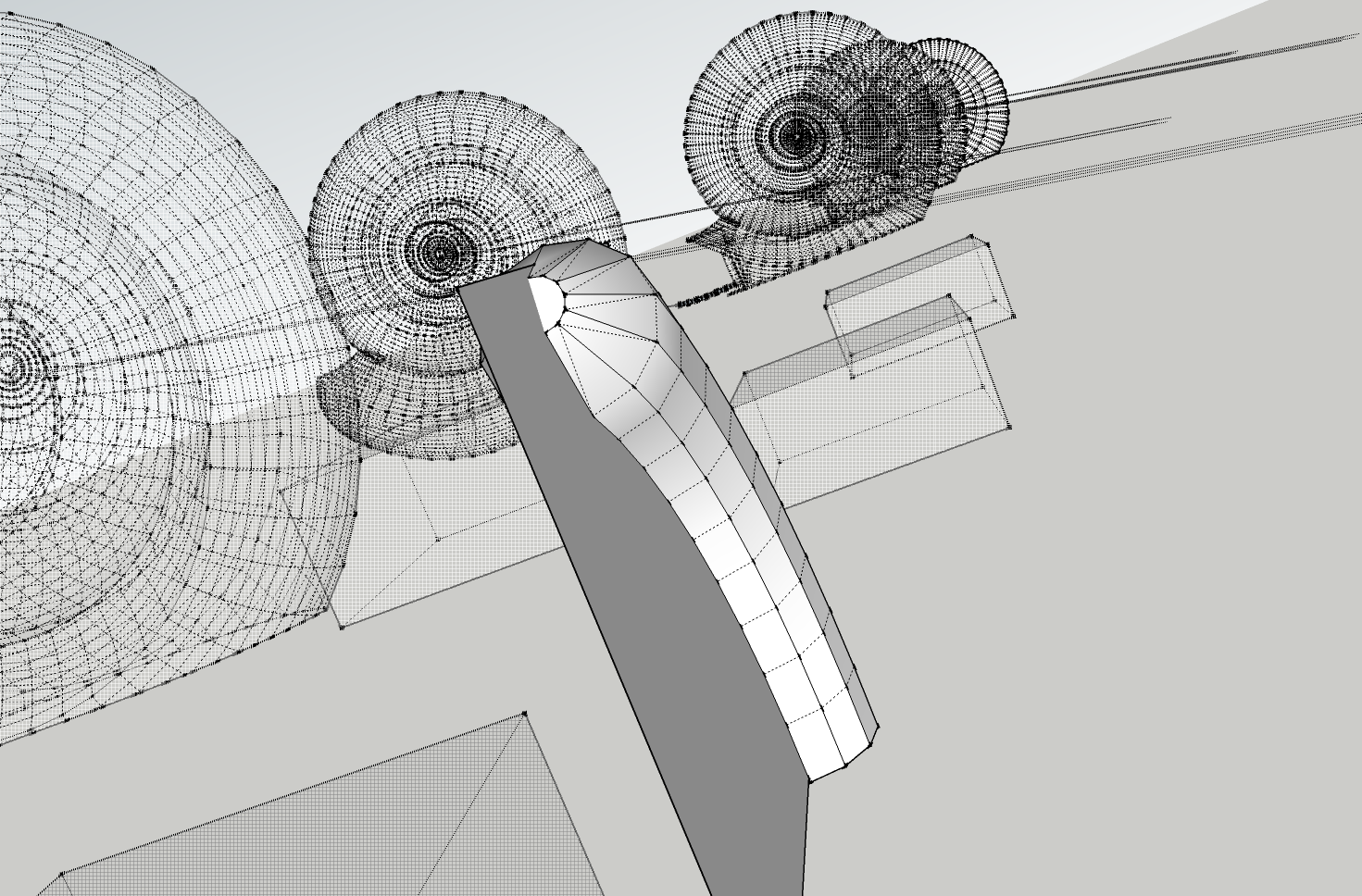
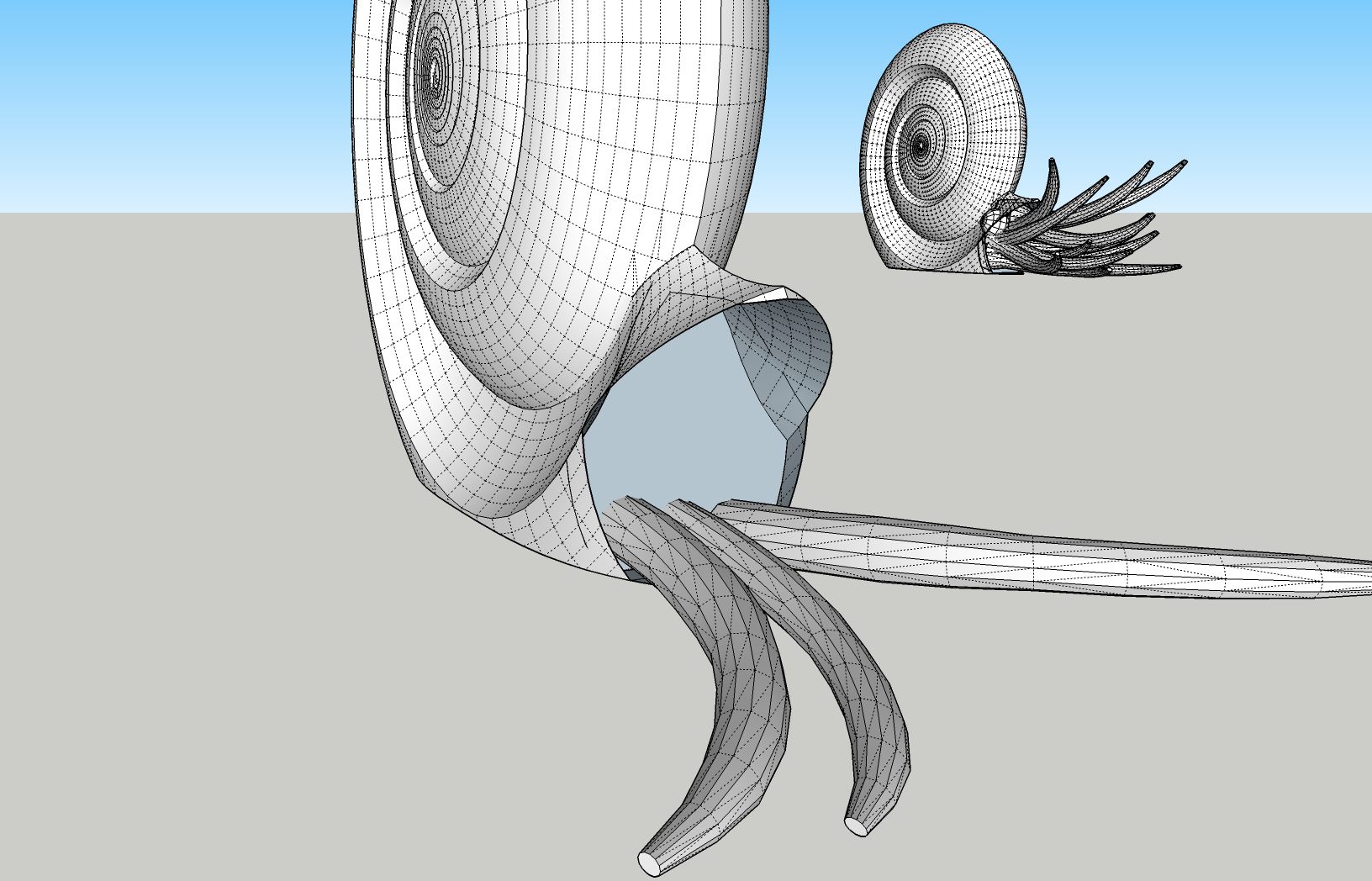
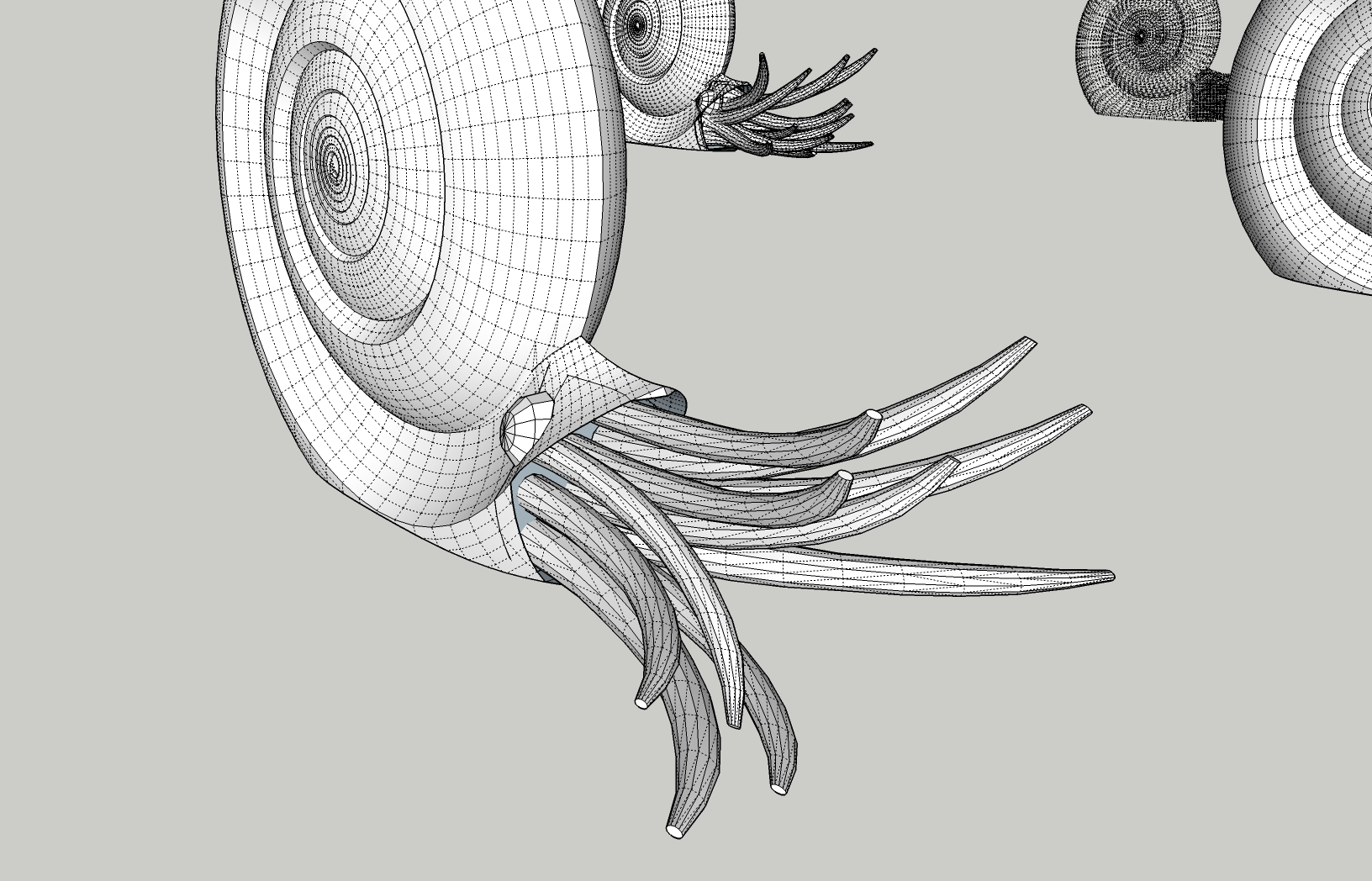
The image below is of my first ever 3D print. As you can see, the quality of the print overall is low. The tentacles did not print as I intended, which caused the lower part of the object to print incorrectly. A couple of prints similar to this helped me to conclude two major points in the design: aesthetically, the ammonite needed a shell which looked more like an ammonite and less like a snail. Practically, the ammonite would have to be printed in separate parts and assembled.
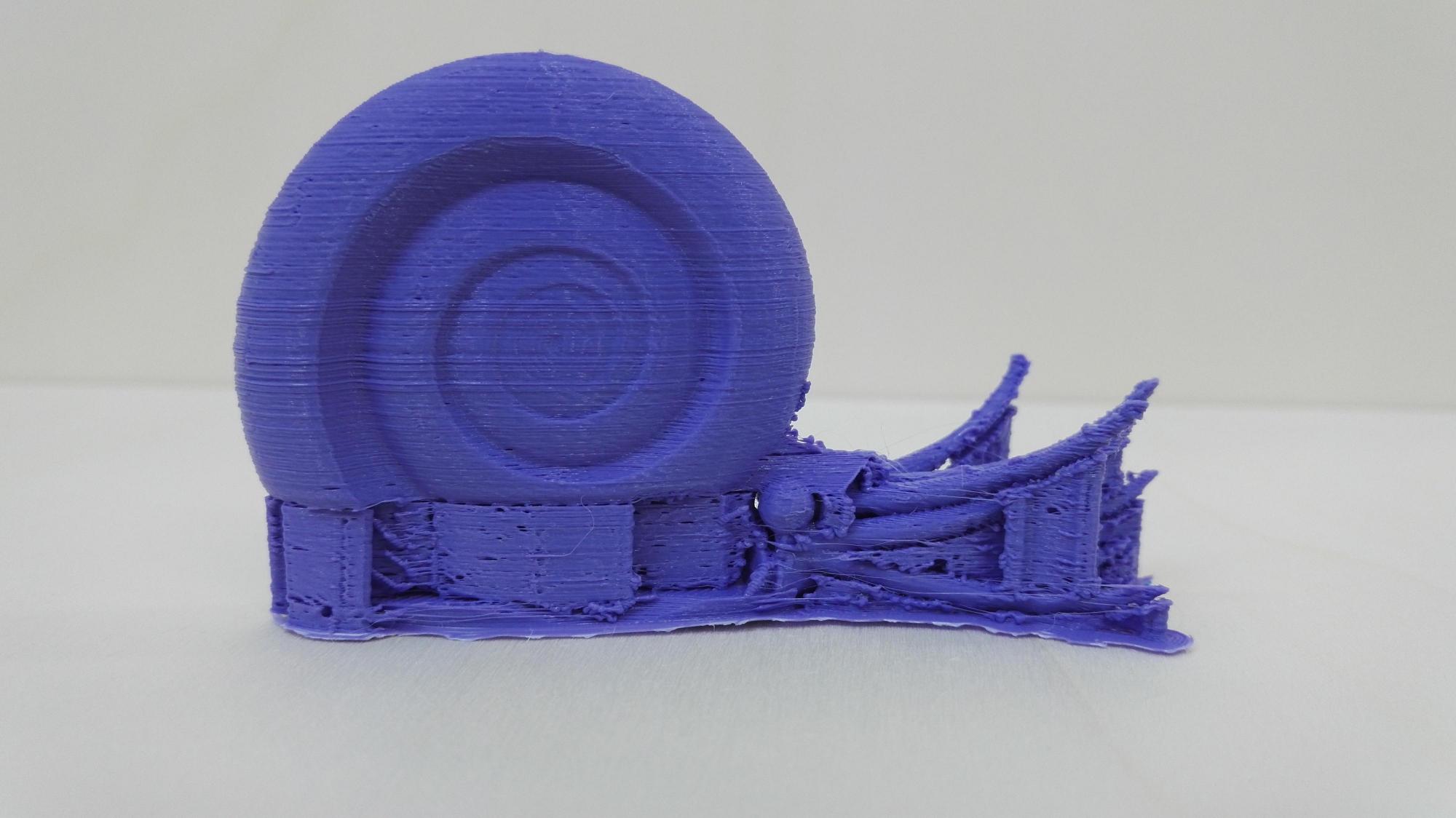
First 3D print, Adrian Finn, 2017
Around this time, I was very fortunate to be loaned a 3D printer to take home over the Easter holidays. I'd like to thank the AUB Interior Design staff for their continued help (and patience!) with me turning up daily with new models to print, and all of the questions that needed answering to constantly improve my skills over time.
The model kept improving over time, with many prototype prints and tests being conducted from home. Many adjustments were made as I had to work out how pieces would fit together. As well as this, I had to design the components to be printable - the digital object couldn't have gaps in its surface, and each piece had to be designed in such a way that meant a printer could generate it from top to bottom.
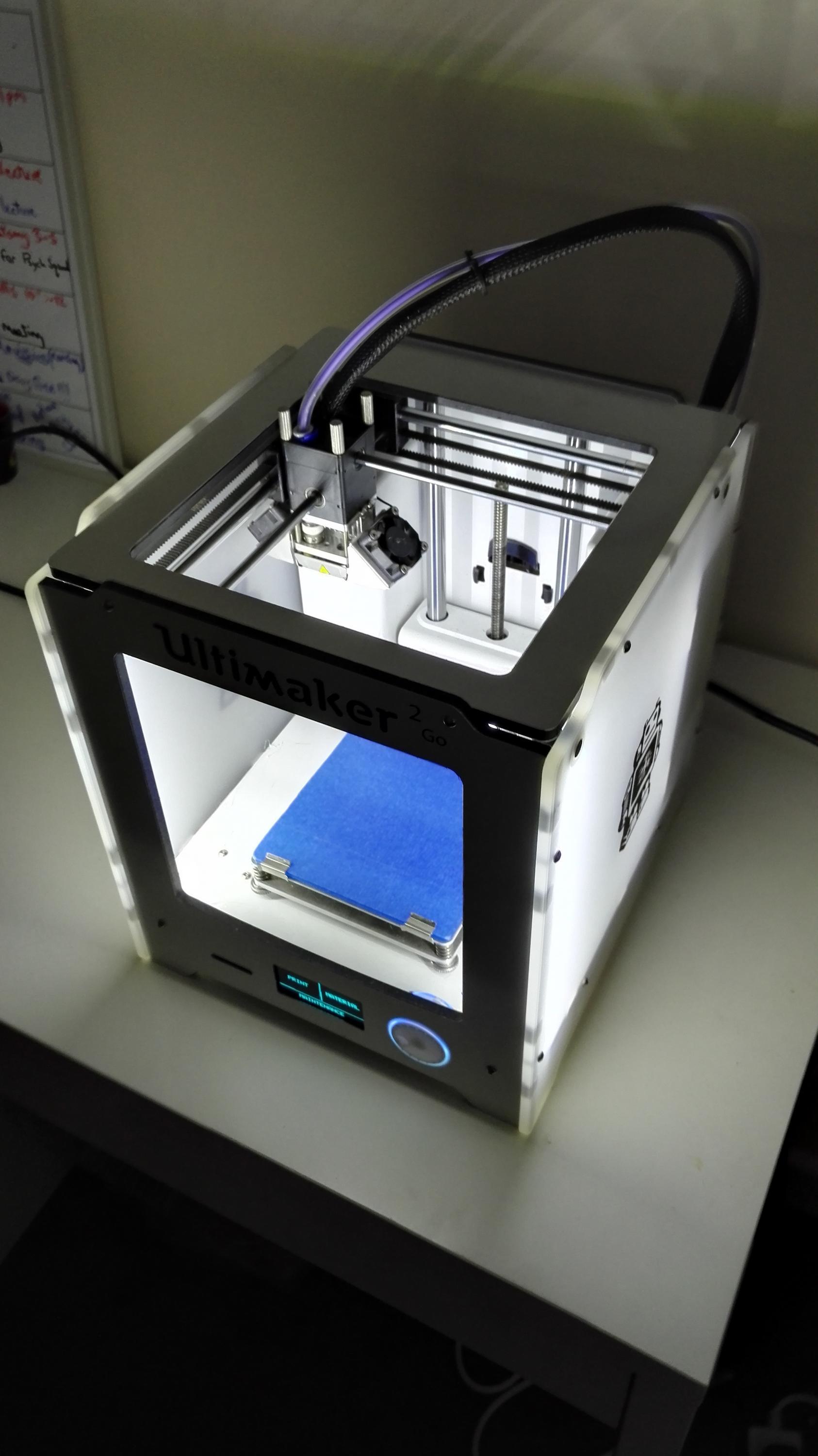
3D printing at home.
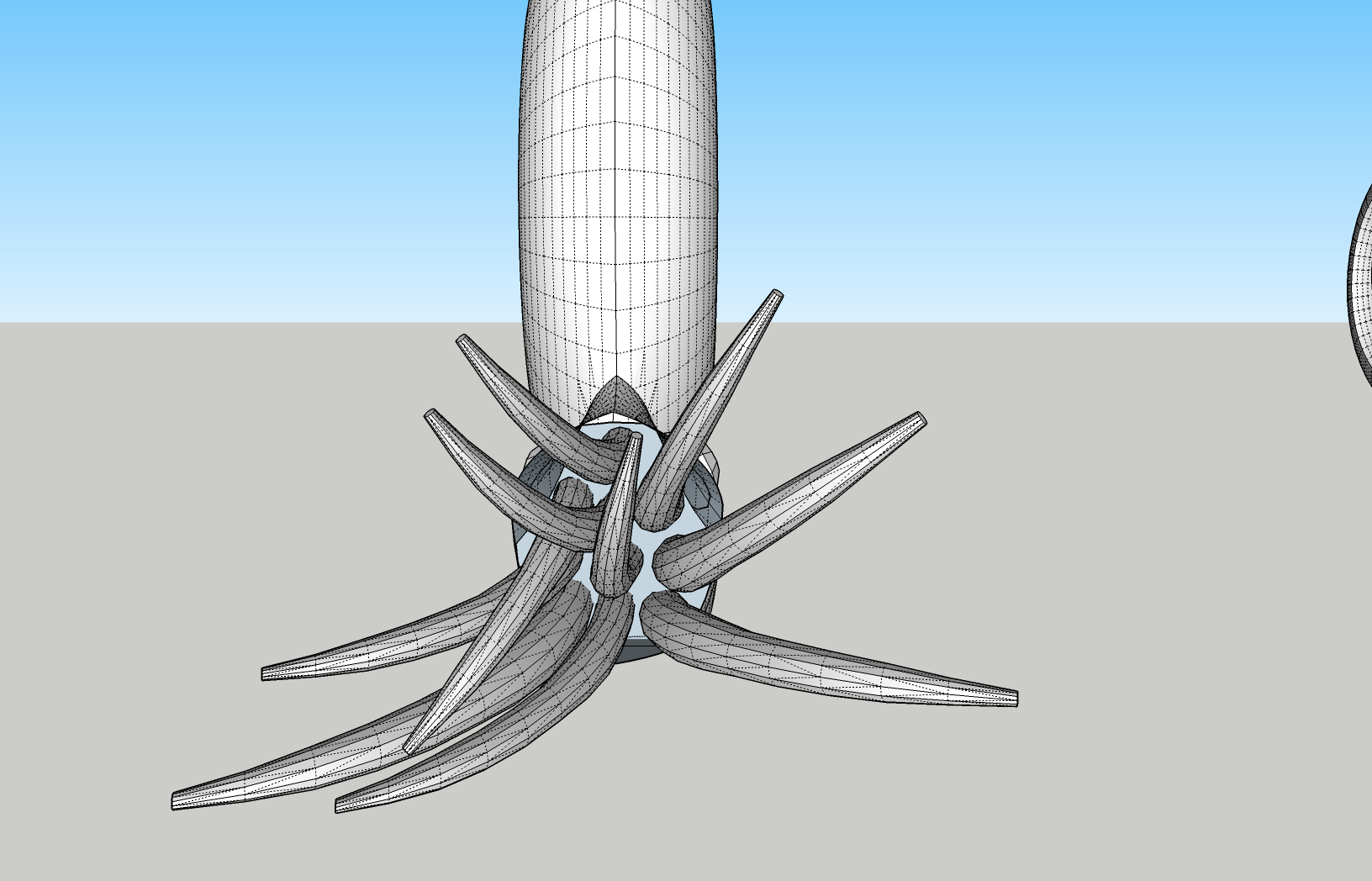
Digital modelling, Adrian Finn, 2017
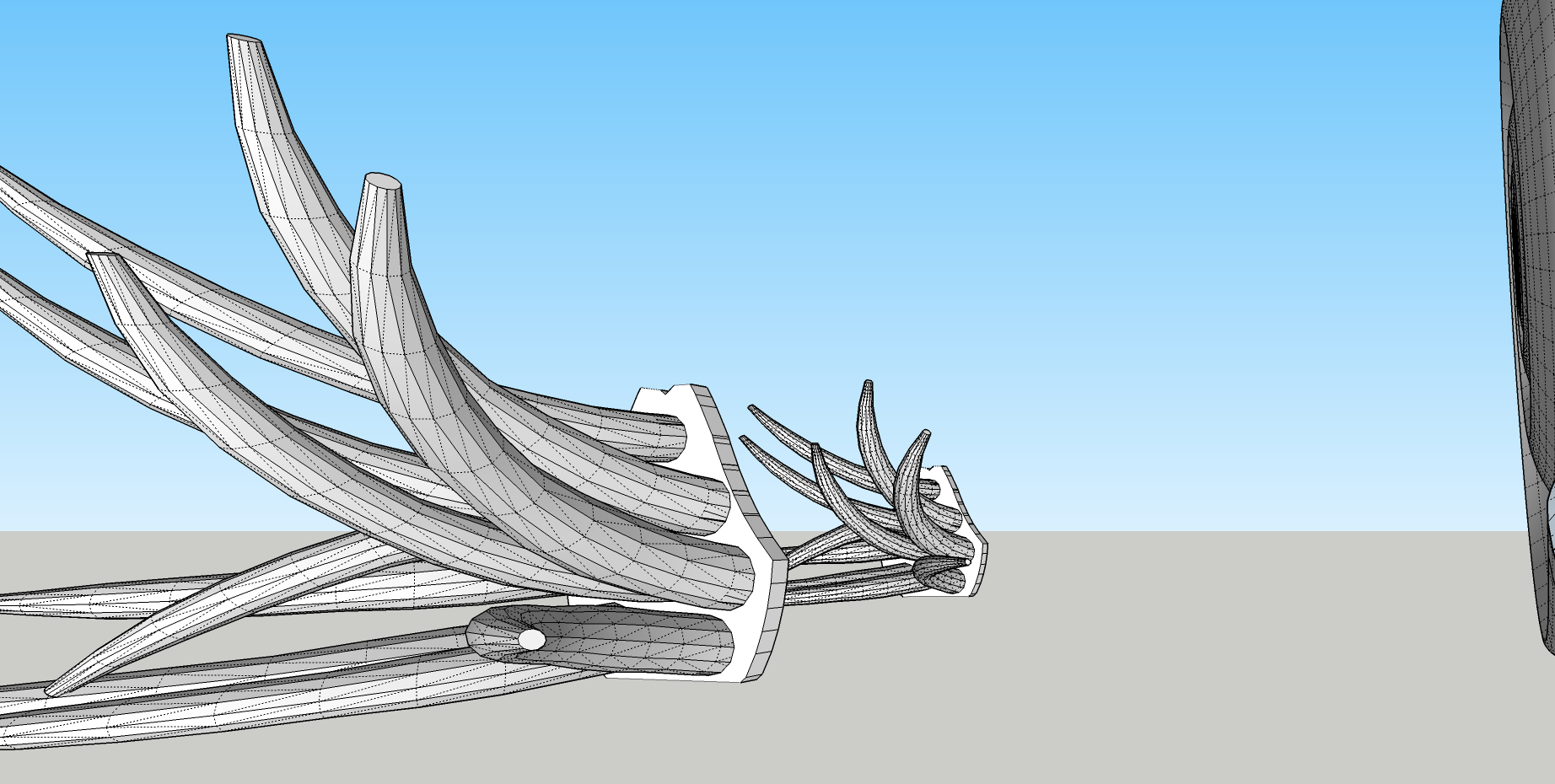
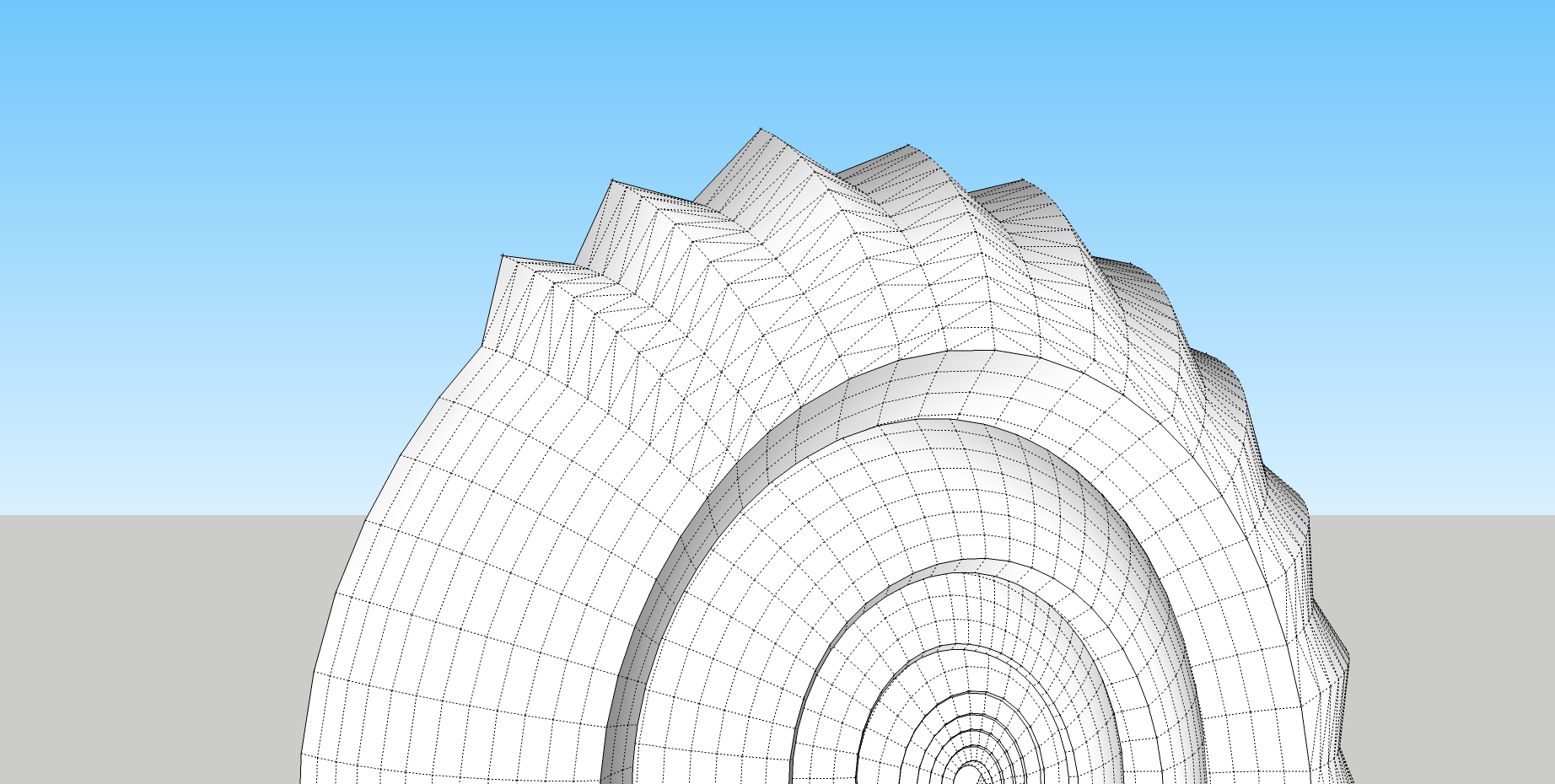
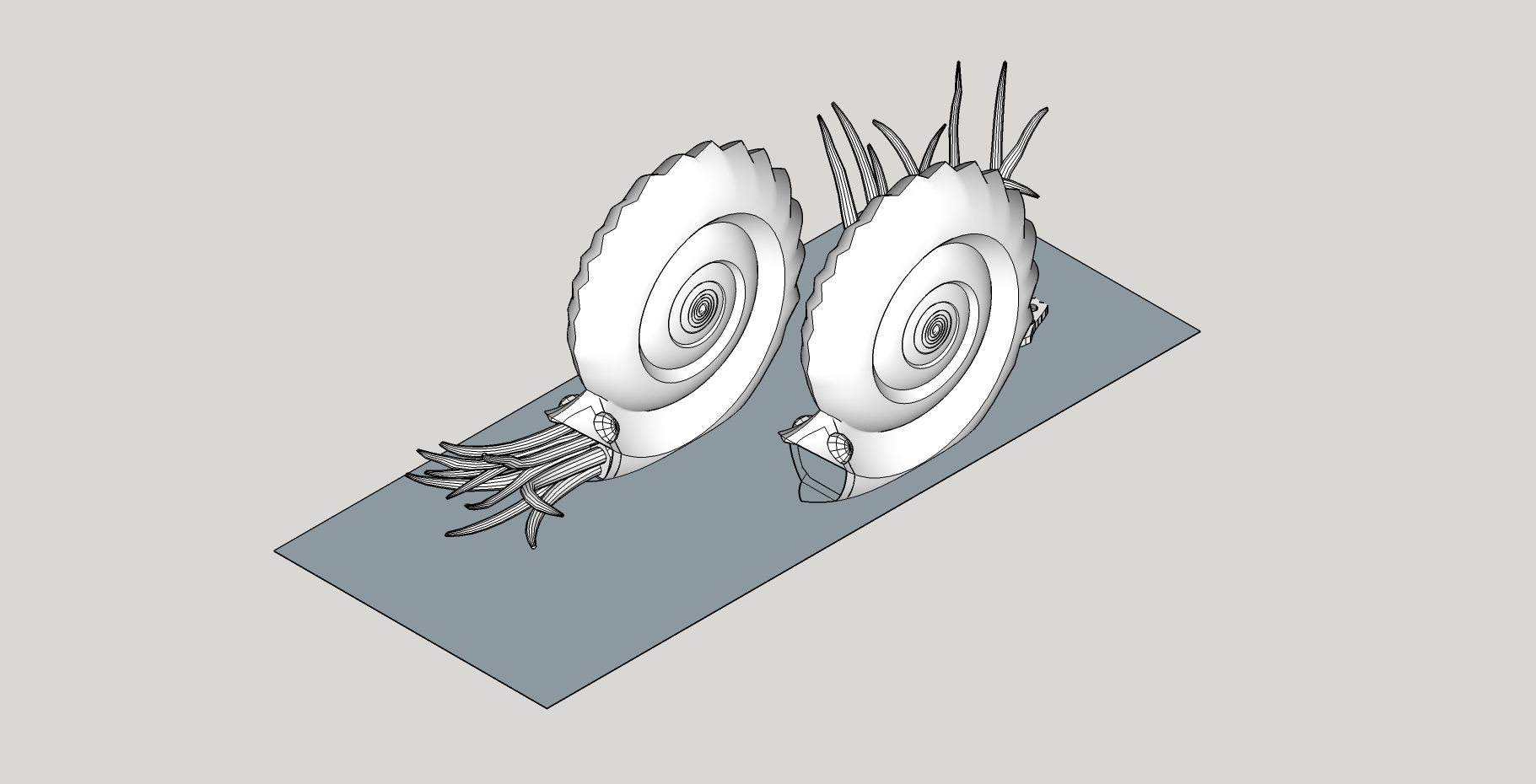
A program called Cura, distributed by the same company that produces the printers I was using (Ultimaker), takes the 3D file you make and simulates how your model will look on the printer. You can then change settings to control how the printer prints, and to what level of quality you would like.
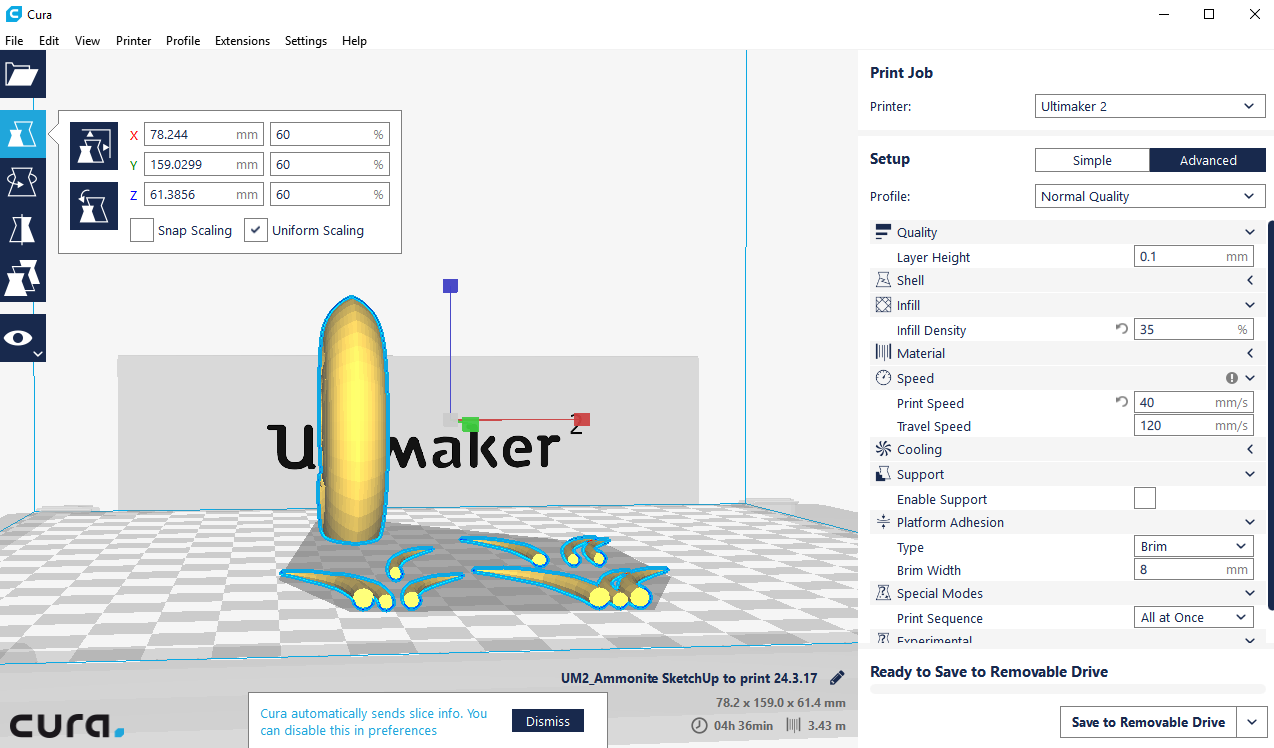
Using the Cura software
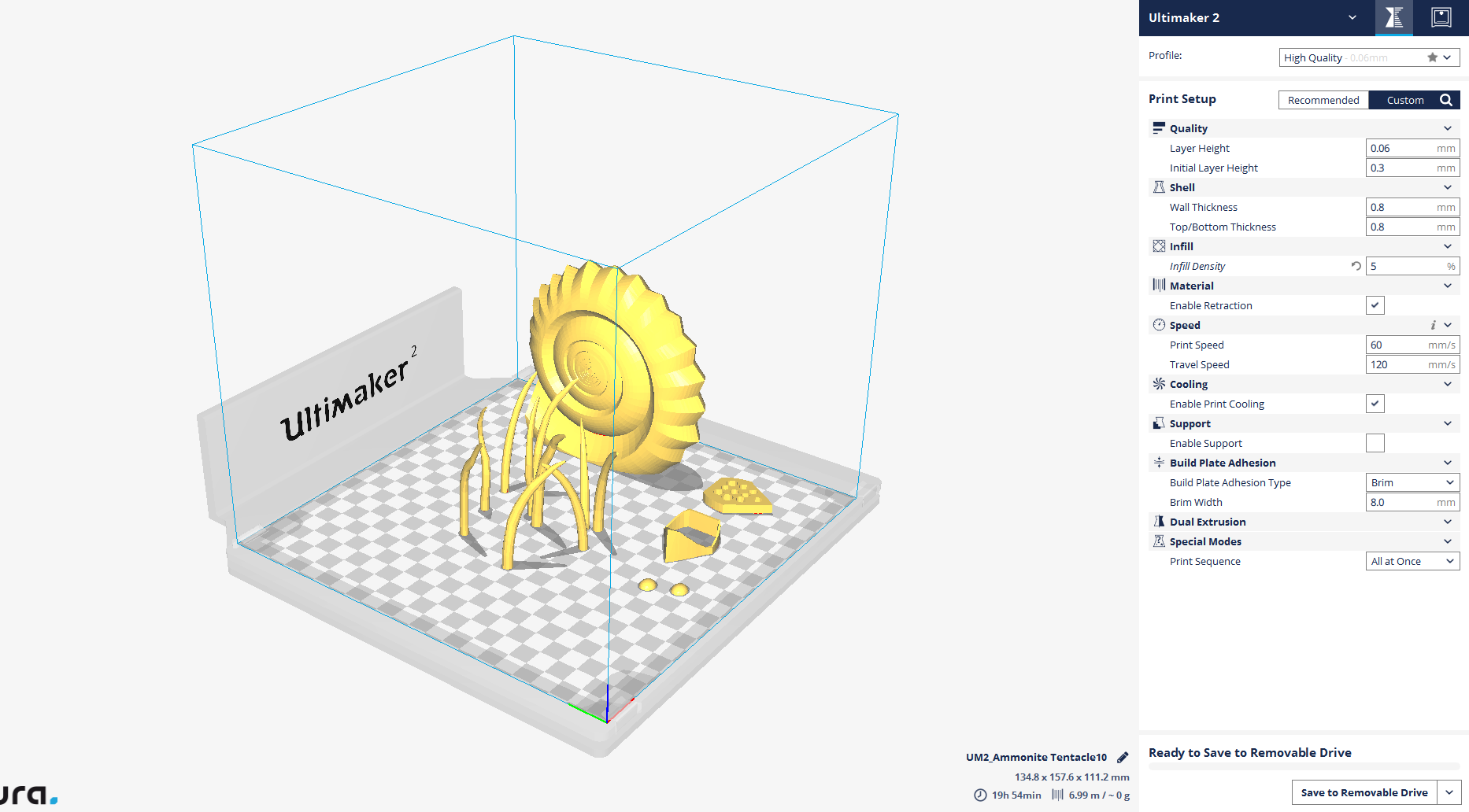
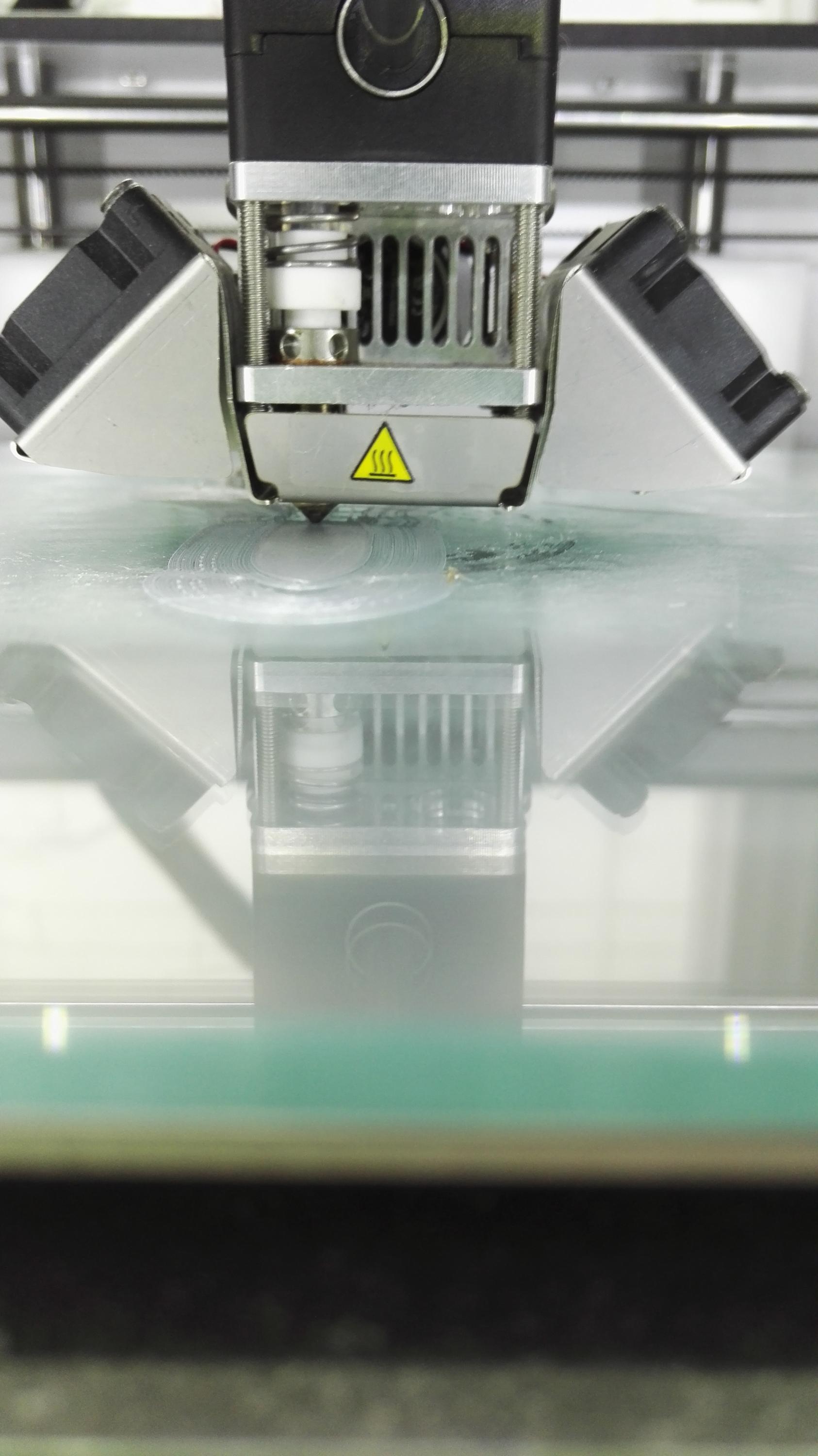
3D printing in action.
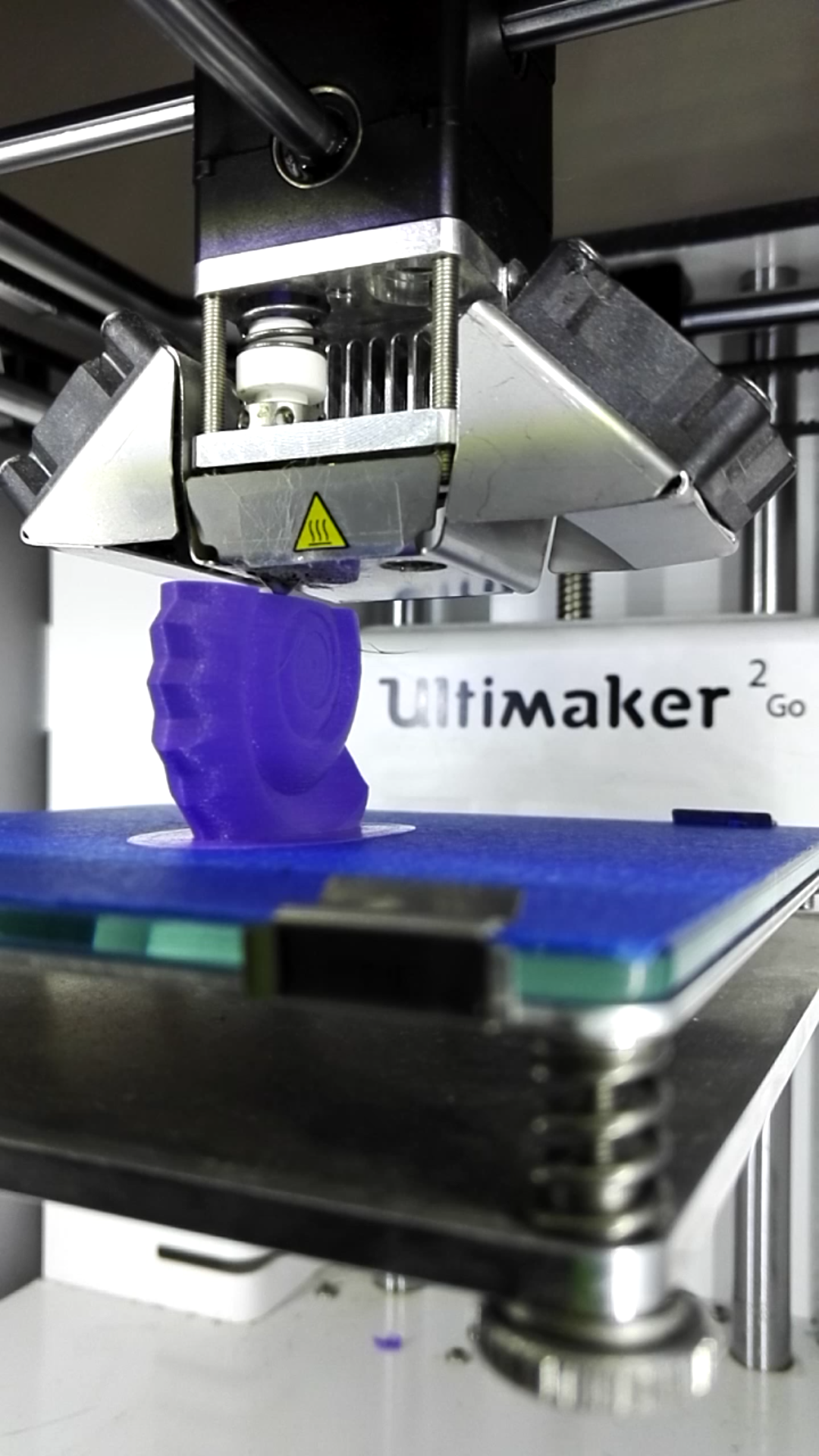
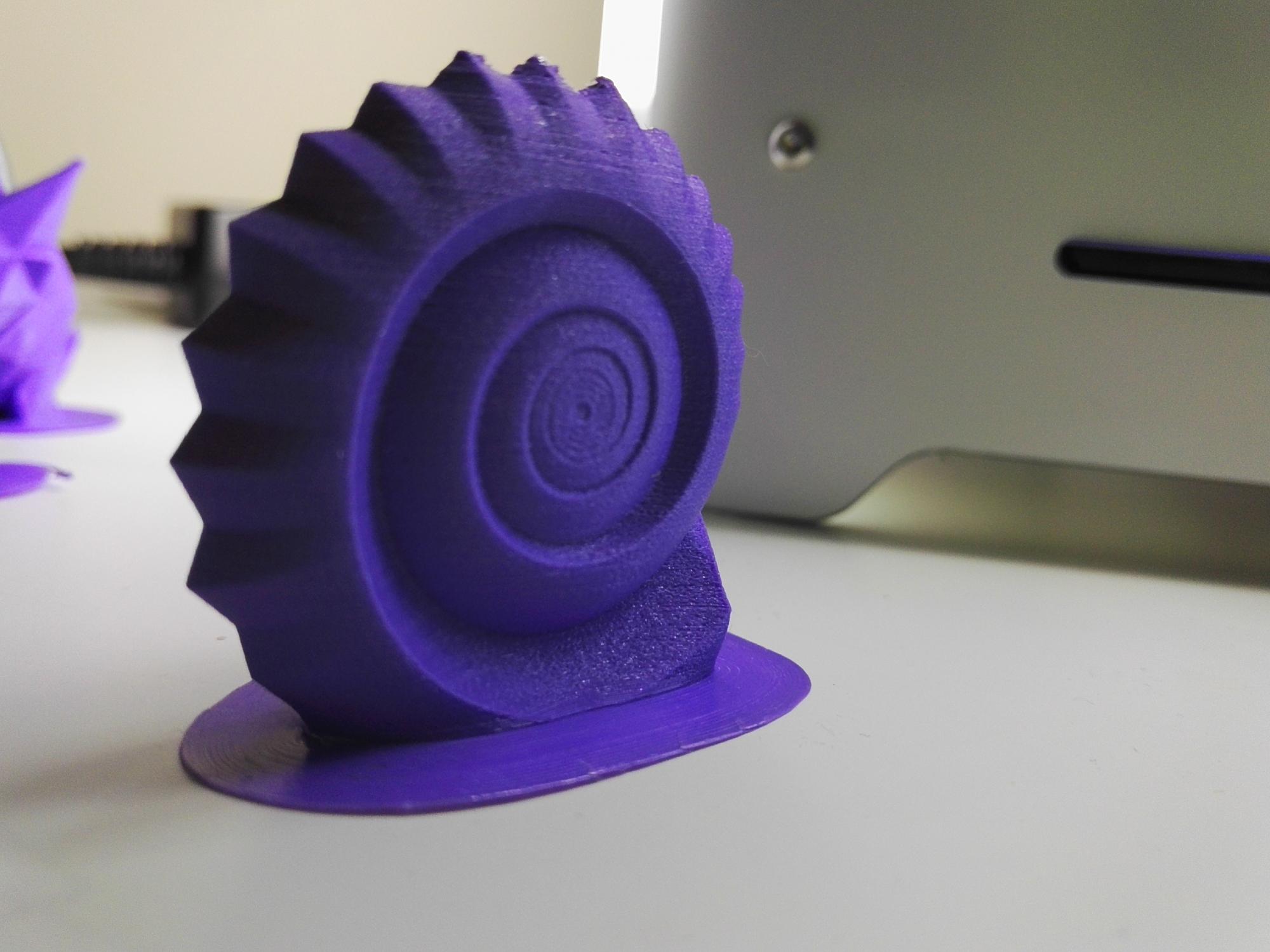
After many iterations of the ammonite, and lots of time carefully gluing delicate pieces together, I was finally satisfied with a final product. However, I wasn't happy with the printing standard achievable with the university printers. I took my model to a professional 3D print studio in Southbourne called The 3D Print House, where I could have my digital creation printed to a professional quality.
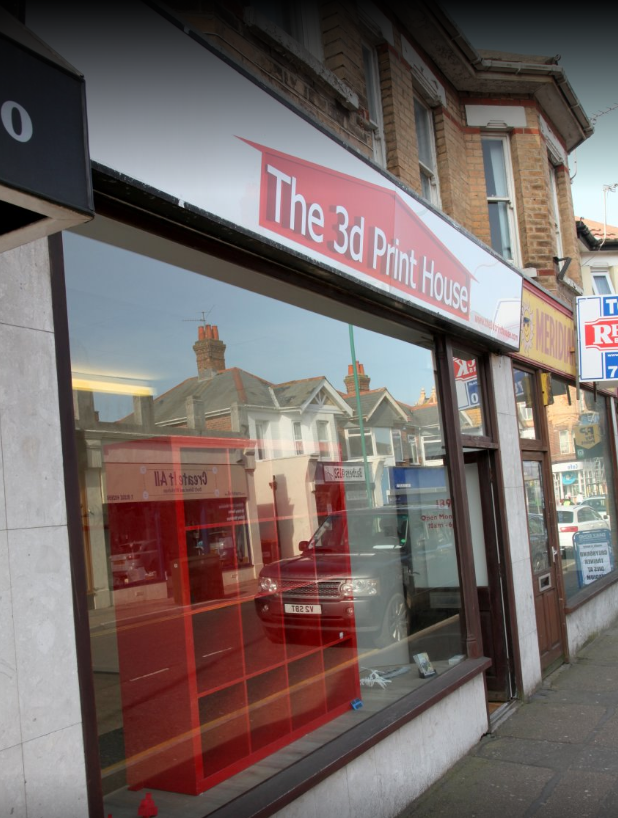
The 3D Print House, Southbourne
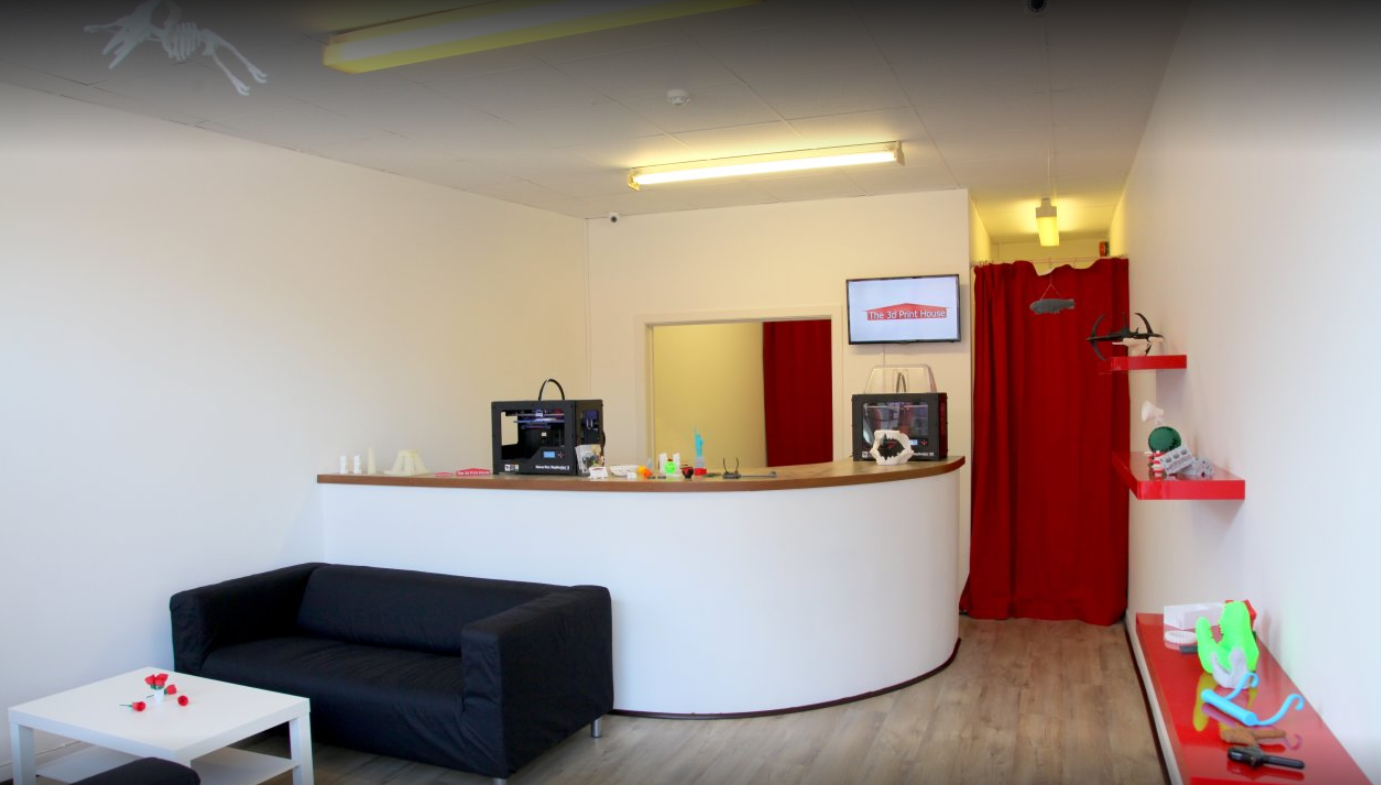
Here I met Mike Beaman, who explained to me a lot behind the process of 3D printing. He advised that I print with the ABS (Acrylonitrile butadiene styrene) plastic, as it is a plastic derived from crude oil. This information was essential to my project's core concept, and truly helps the project to express the message behind it.
With two ammonites collected from the 3D printers, and one printed with the university's resources, I was close to having the final trio of works. One was being primed for painting by the talented Zoe Benham, and the other two were assembled (one has been caught in the act of attacking Poole civilians… on a scale model produced by myself last year):
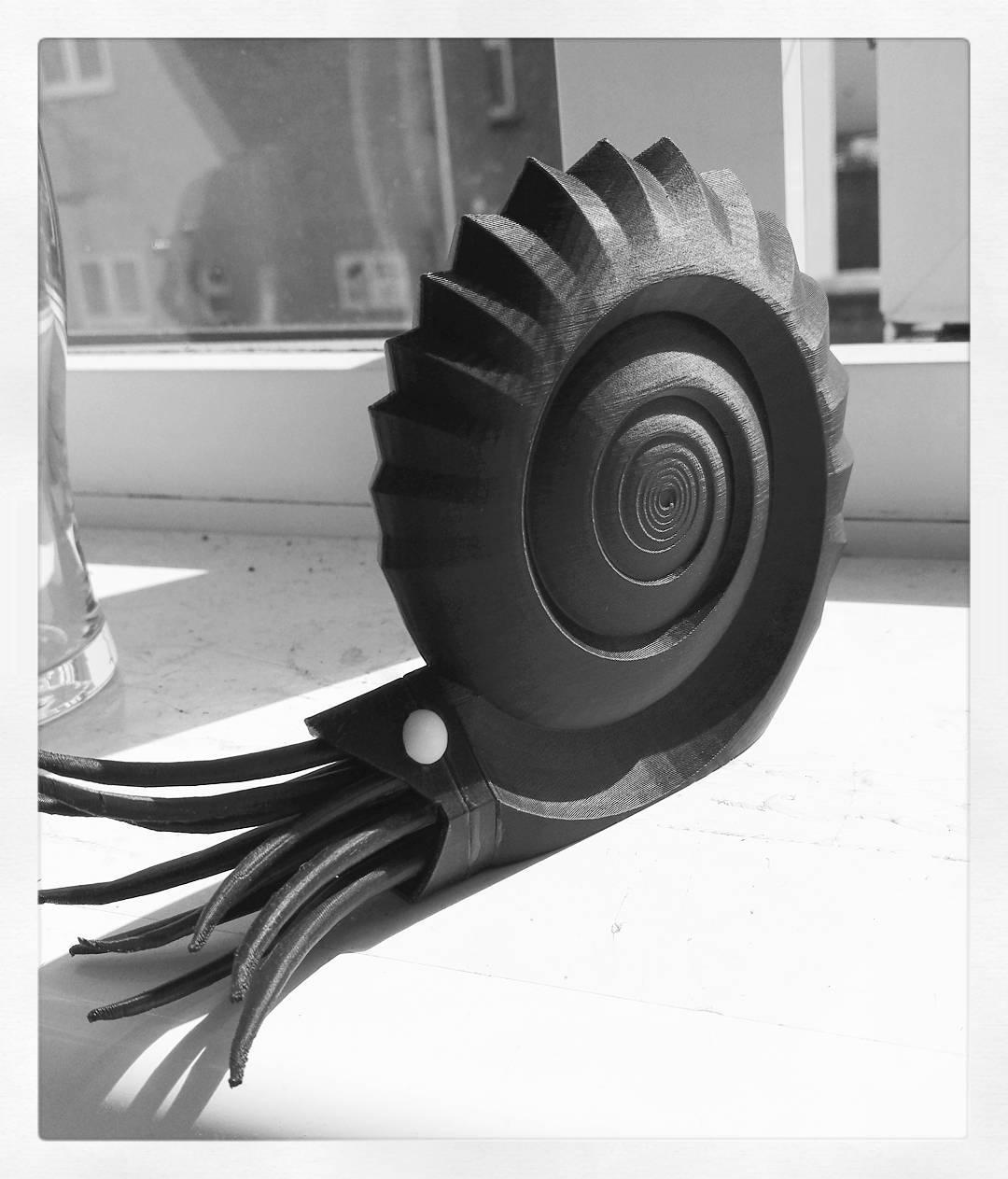
The black ABS model. The colour finish reflects crude oil.
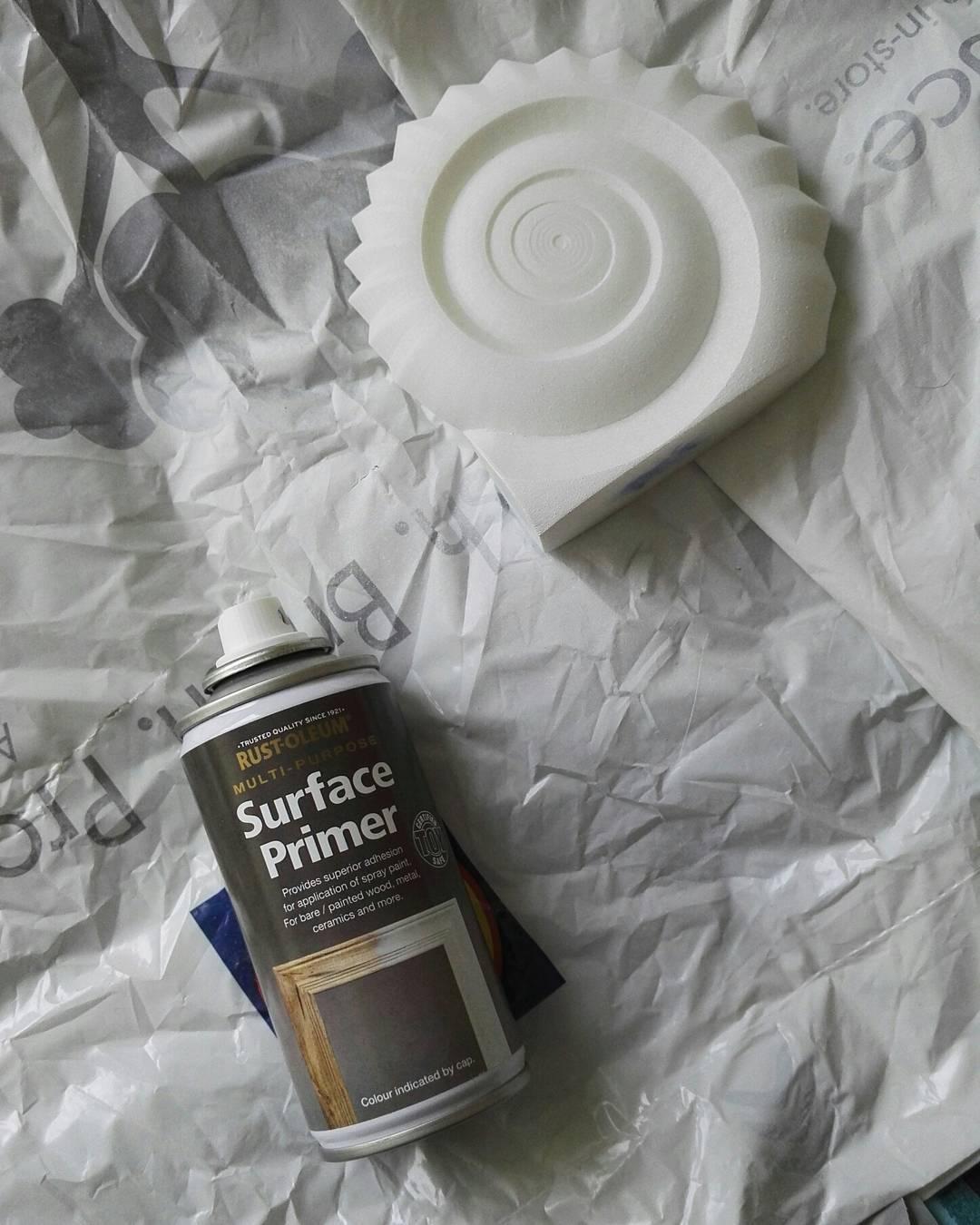
The white ABS model, primed for Acrylic paint.
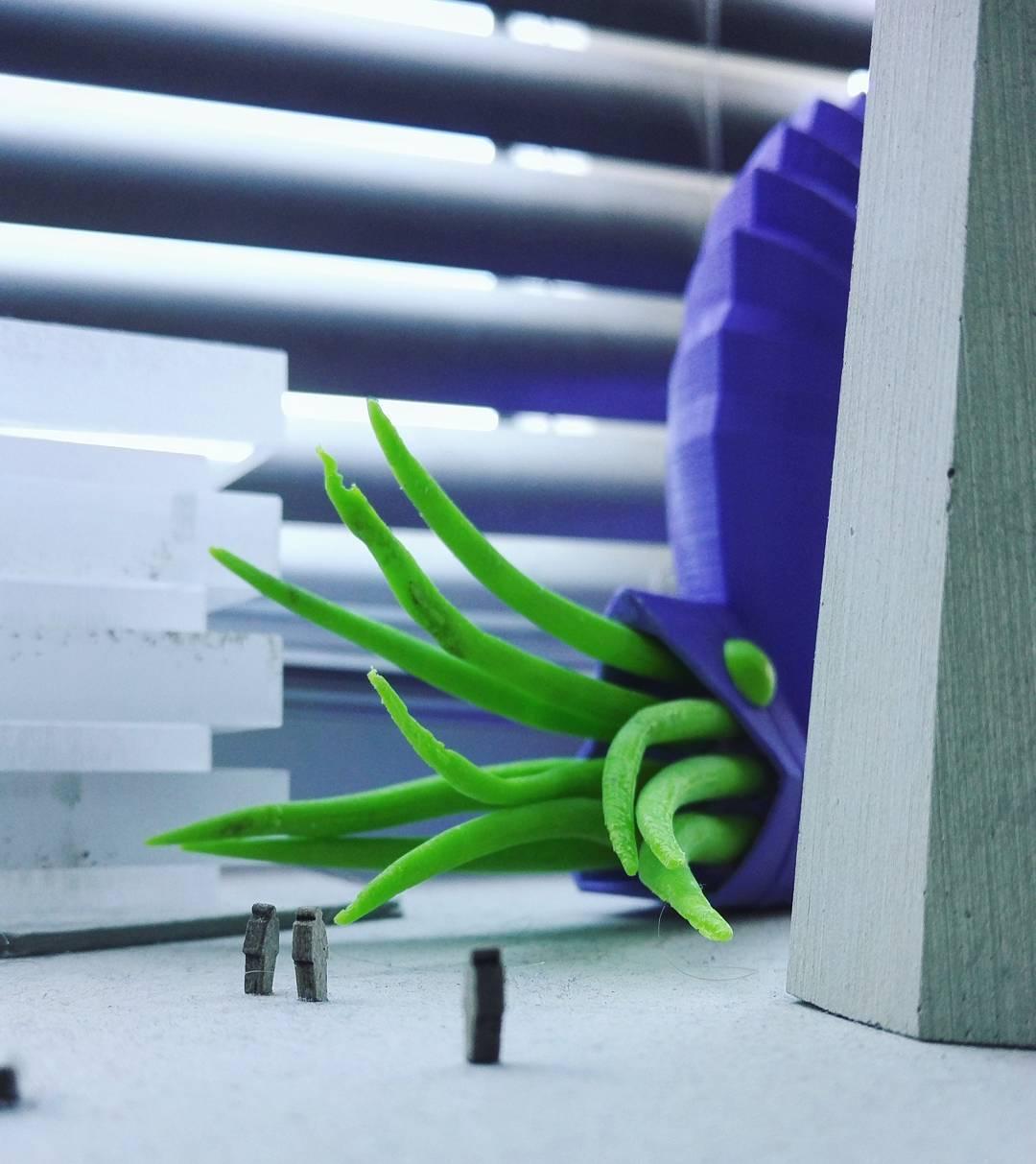
The purple PLA model. PLA is a plastic derived from vegetable oil.
For the white ammonite, I wanted Zoe Benham, a third year AUB Textiles student, to paint the model with acrylic paint to highlight and celebrate the versatility of plastic as an outlet for creativity. Zoe had been following the project closely throughout, and was aware of the brief. I was curious to see how she would interpret my work.
And finally, here we have the final pieces of the MoDiP Student Creative project:
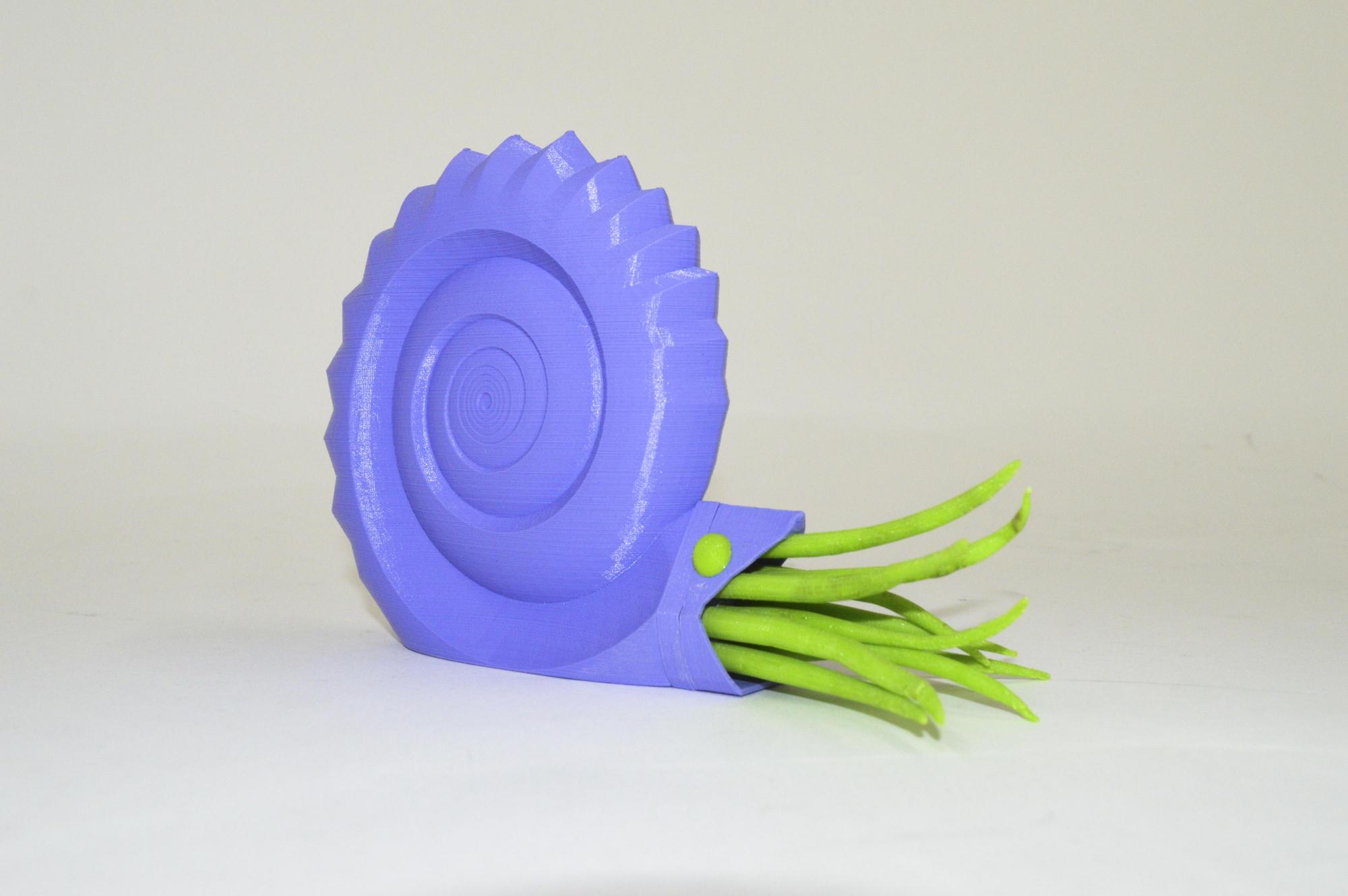
PLA Ammonite, Adrian Finn, 2017
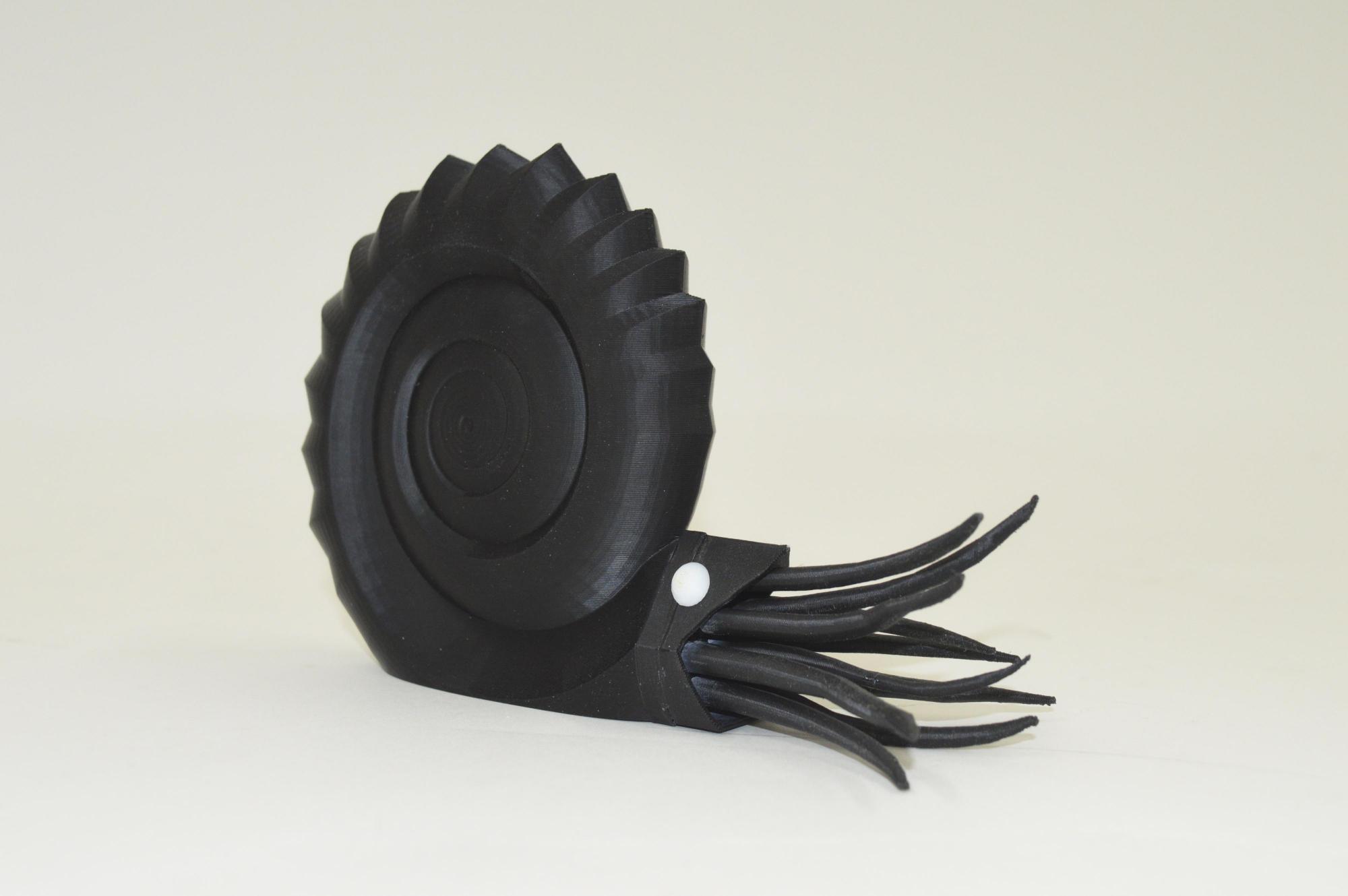
ABS Ammonite, Adrian Finn, 2017
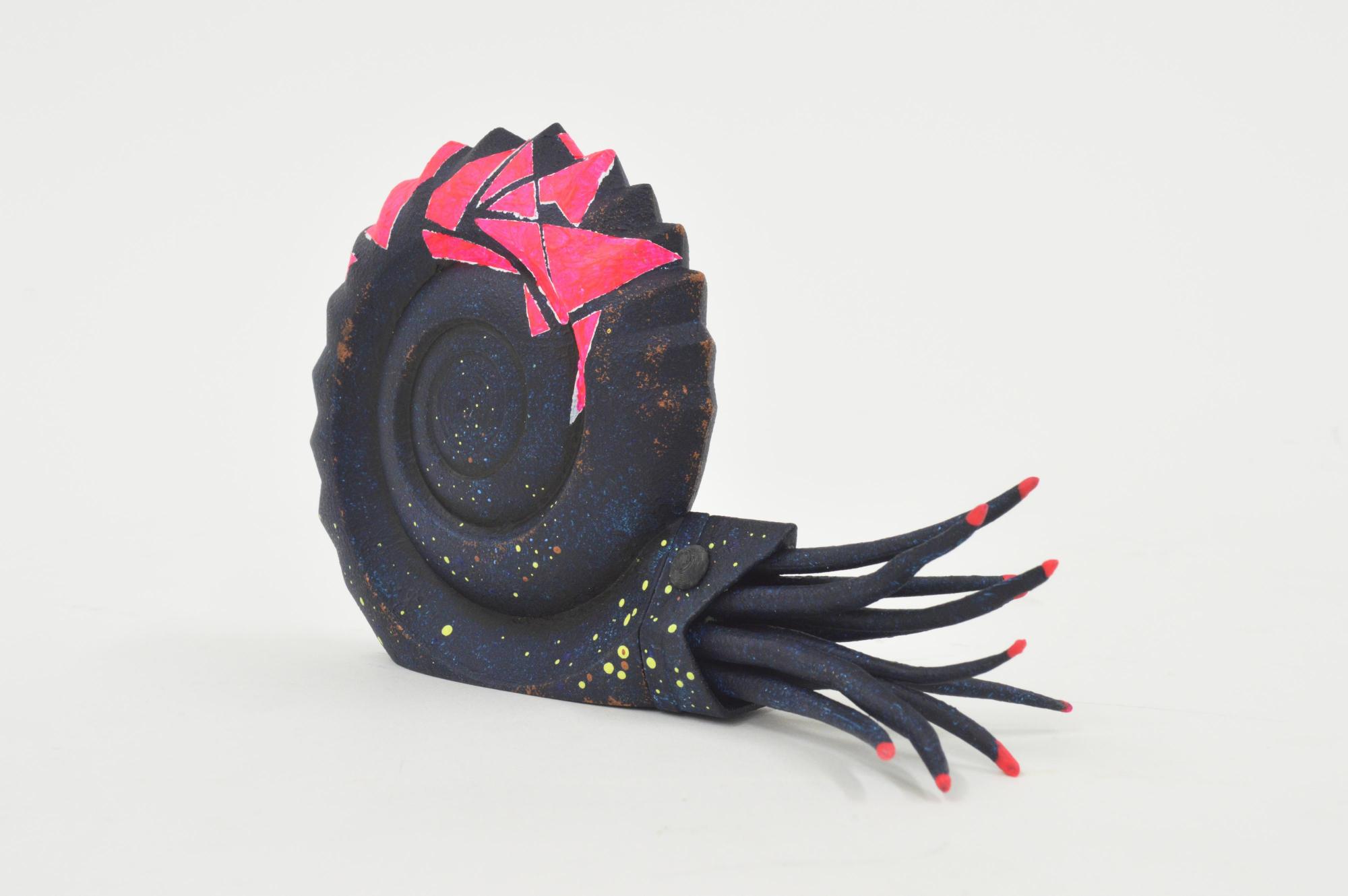
ABS Ammonite, Adrian Finn in collaboration with Zoe Benham, 2017
Zoe's interpretation of the brief was stunning. Detailed photos show her use of fluorescent acrylic paint, the layering of paint to give a texture to the shell, and the change in technique of how the paint is applied.
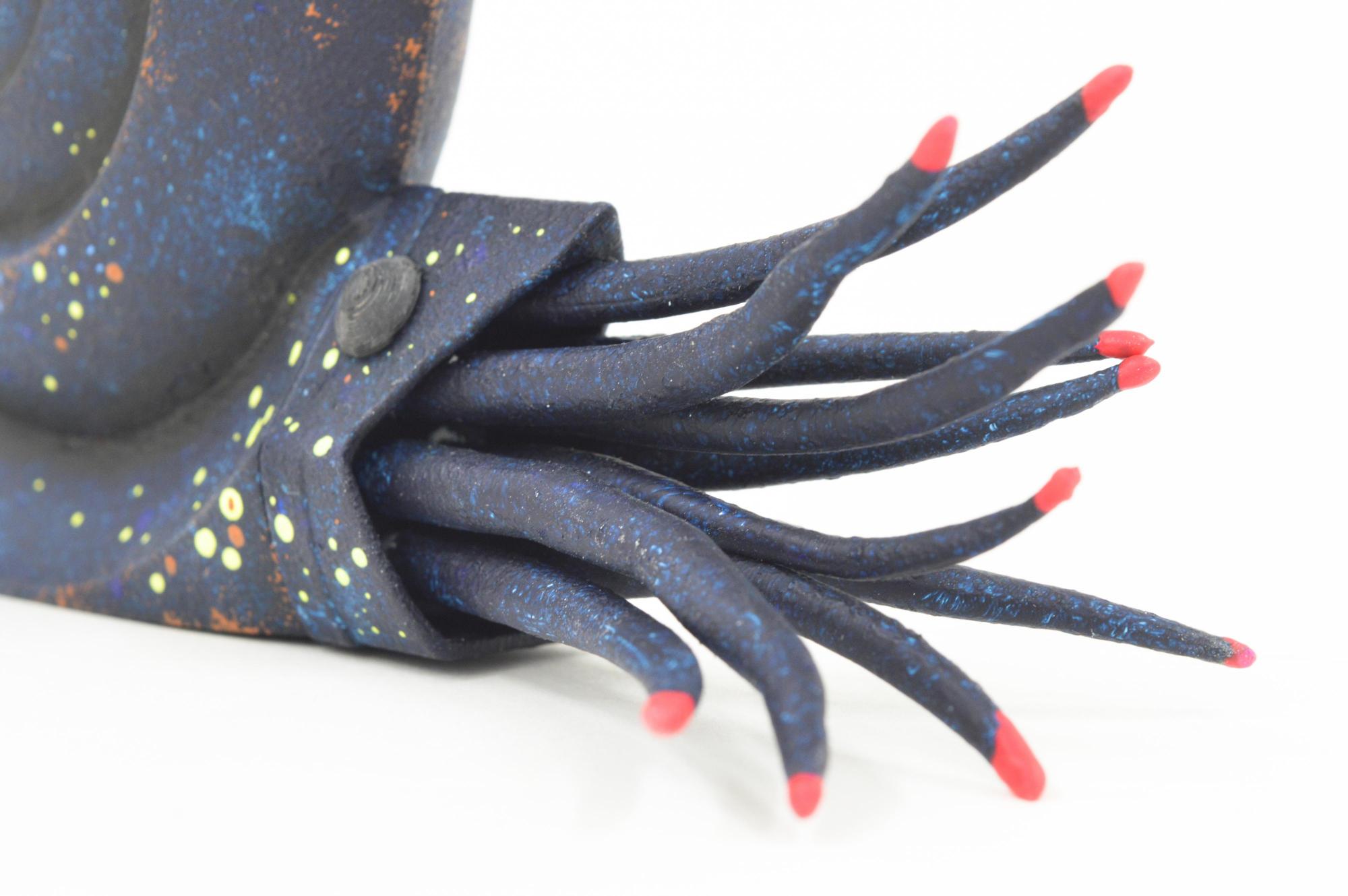
ABS Ammonite, Adrian Finn in collaboration with Zoe Benham, 2017
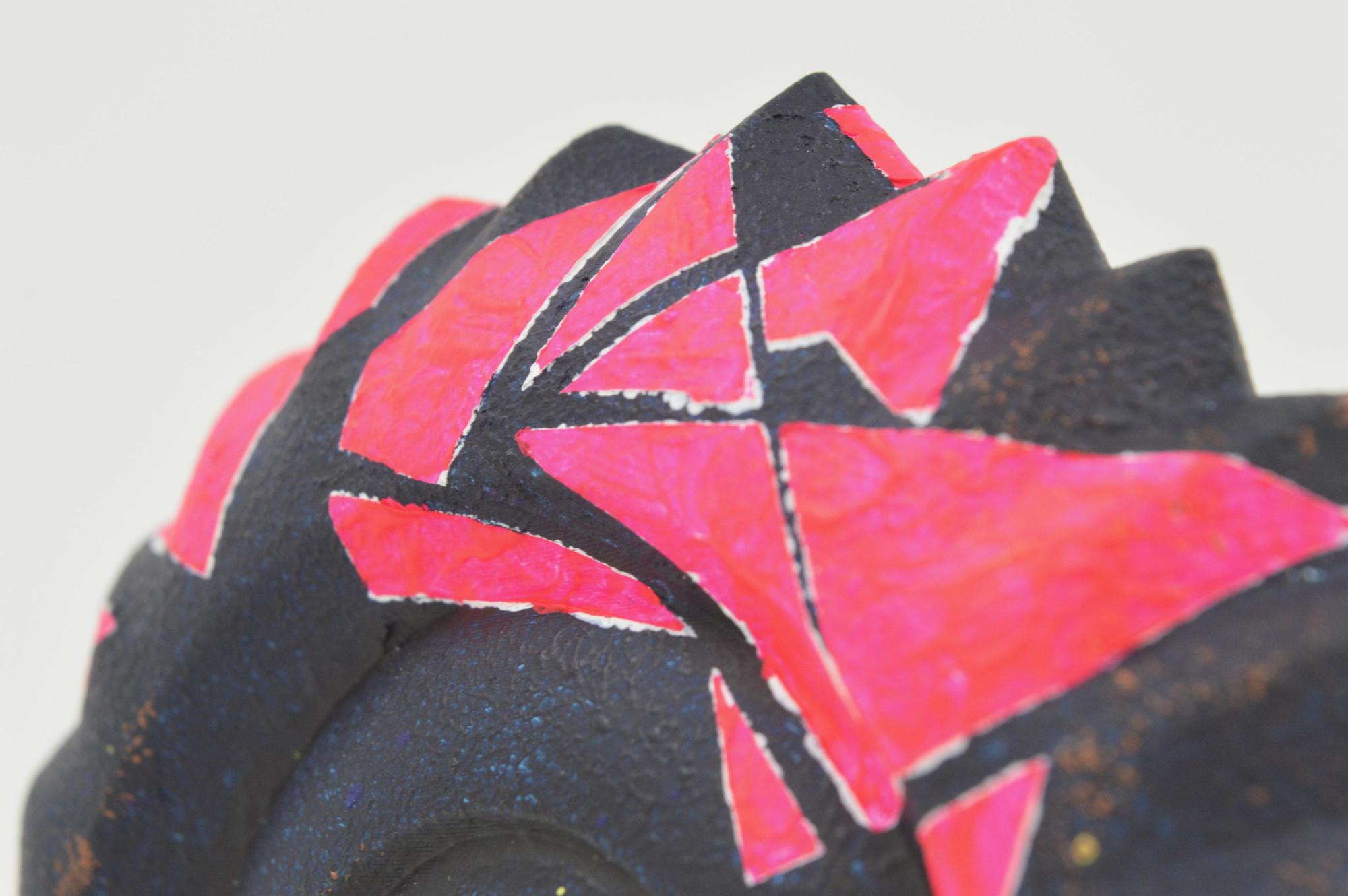
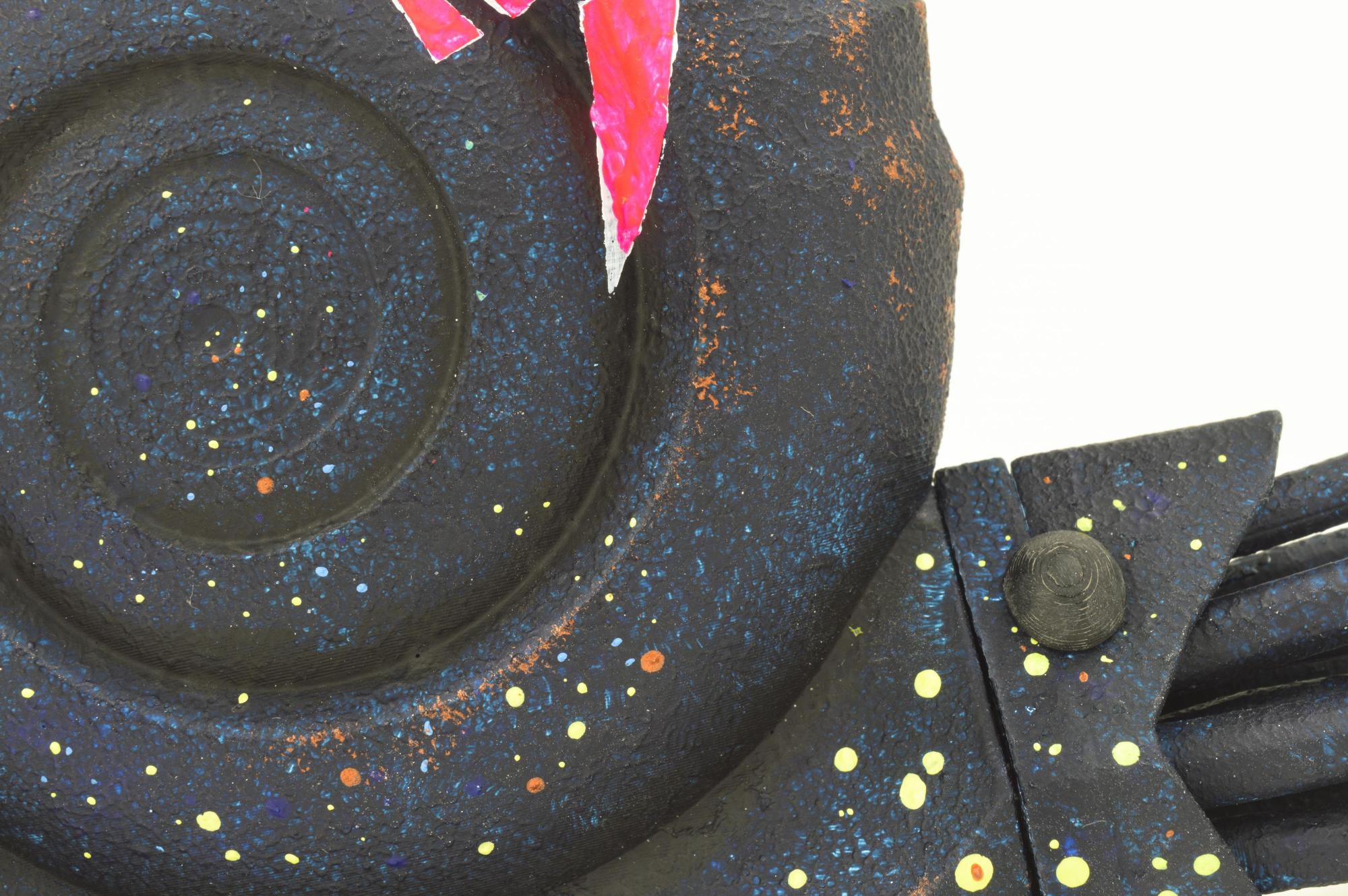
I would like to thank the MoDiP staff for making this project possible through funding and support for the Student Creative scheme; the 3D Print House for their services and advice; Zoe Benham for producing a beautiful finish to the last ammonite; the Interior Design staff for putting up with my constant badgering for help.
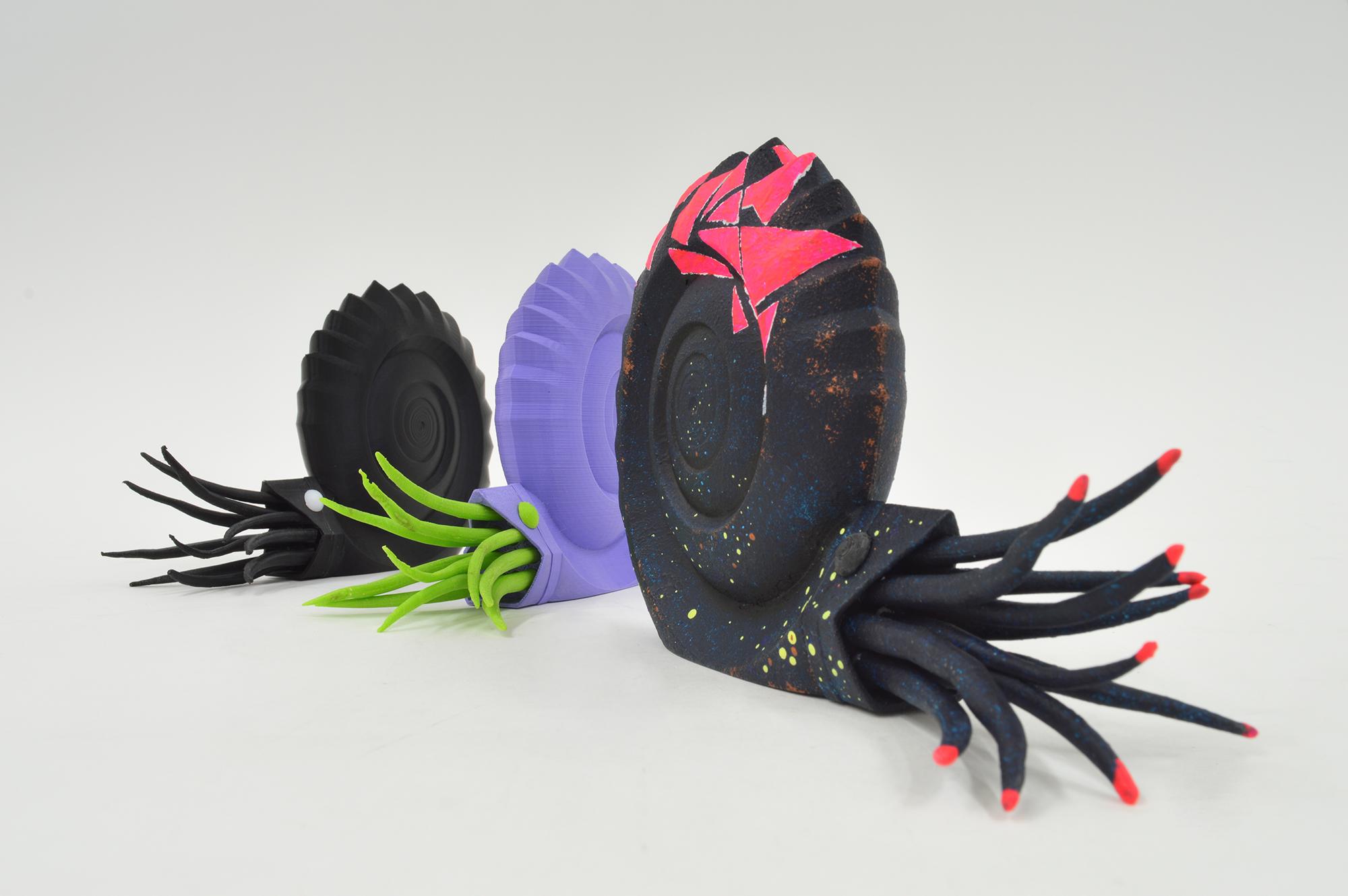
Ammonites, Adrian Finn, 2017
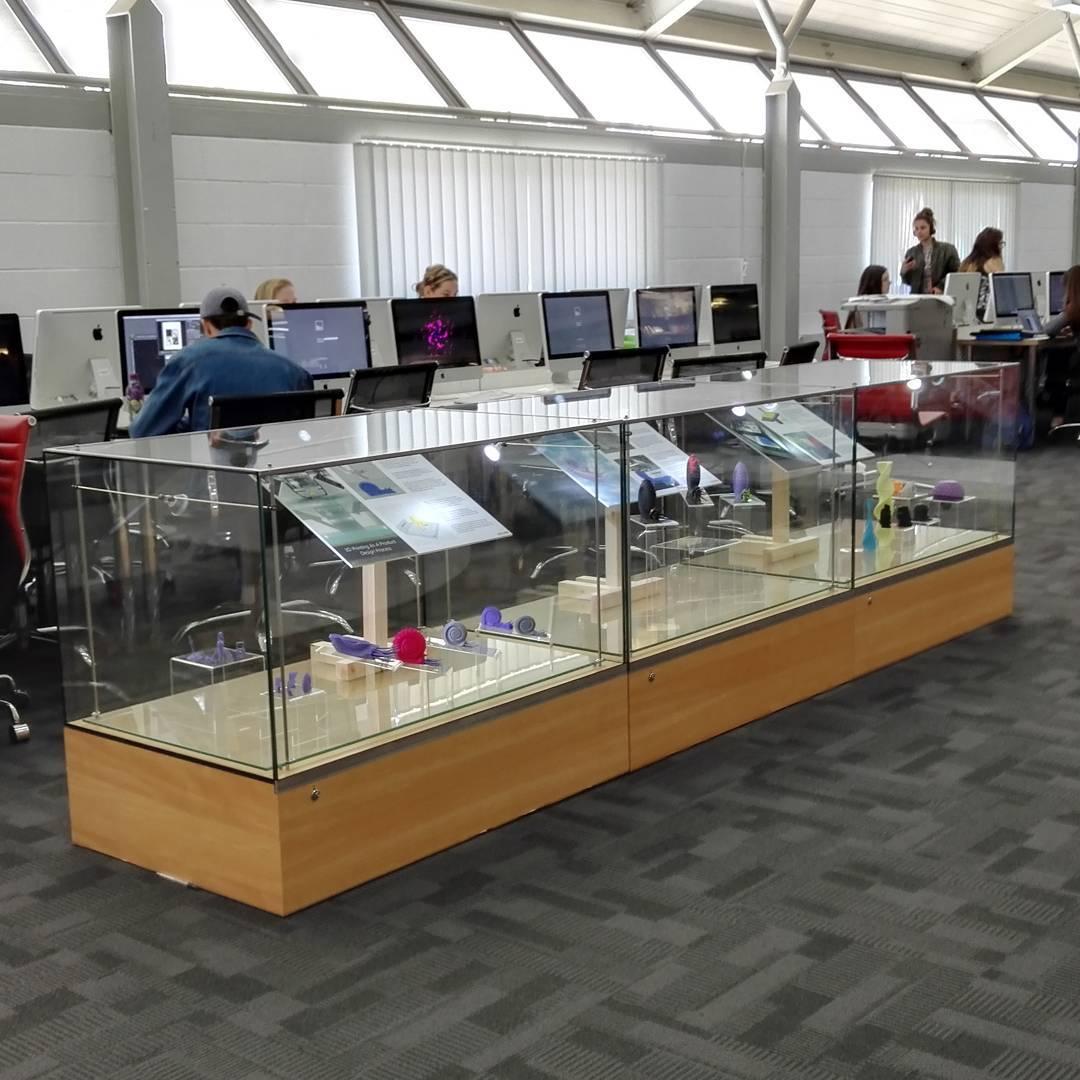
The work has been displayed in the AUB library
If you are interested in keeping up to date with my work, and seeing how 3D printing influenced my Final Major Project, please visit my Facebook page at https://www.facebook.com/AdrianFinnCreative/
A professional portfolio will follow soon, so watch that space!
Thanks for reading!
MoDiP would like to congratulate Adrian on winning the 2017 Dean's Prize for Architecture, Art and Design. This prize was awarded to Adrian for his final major project and his collaborative working including the MoDiP Student Creative project.

